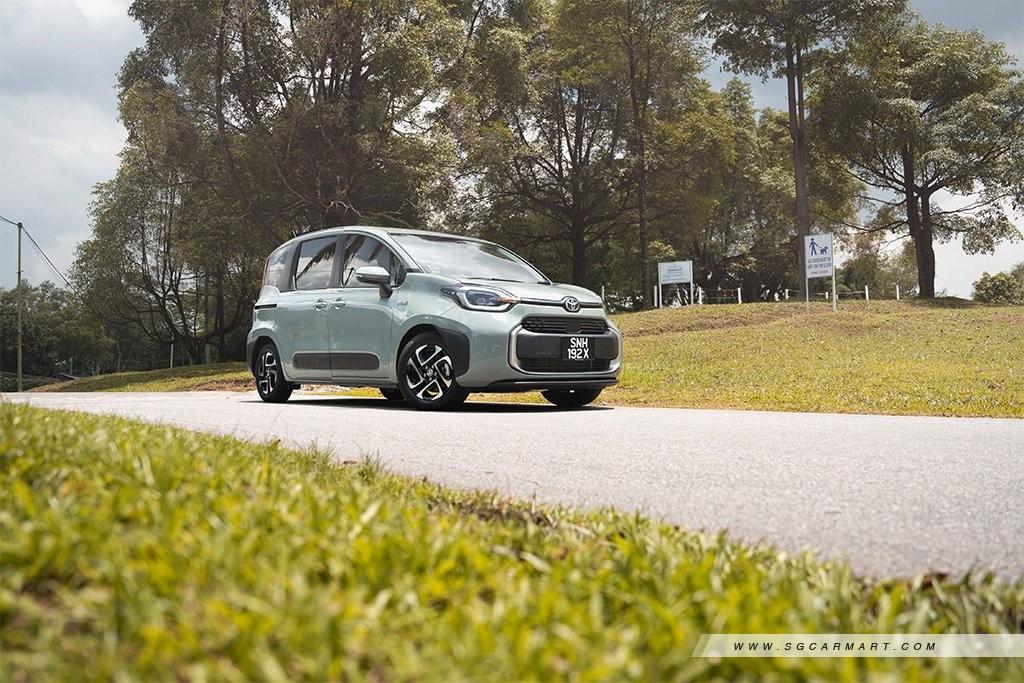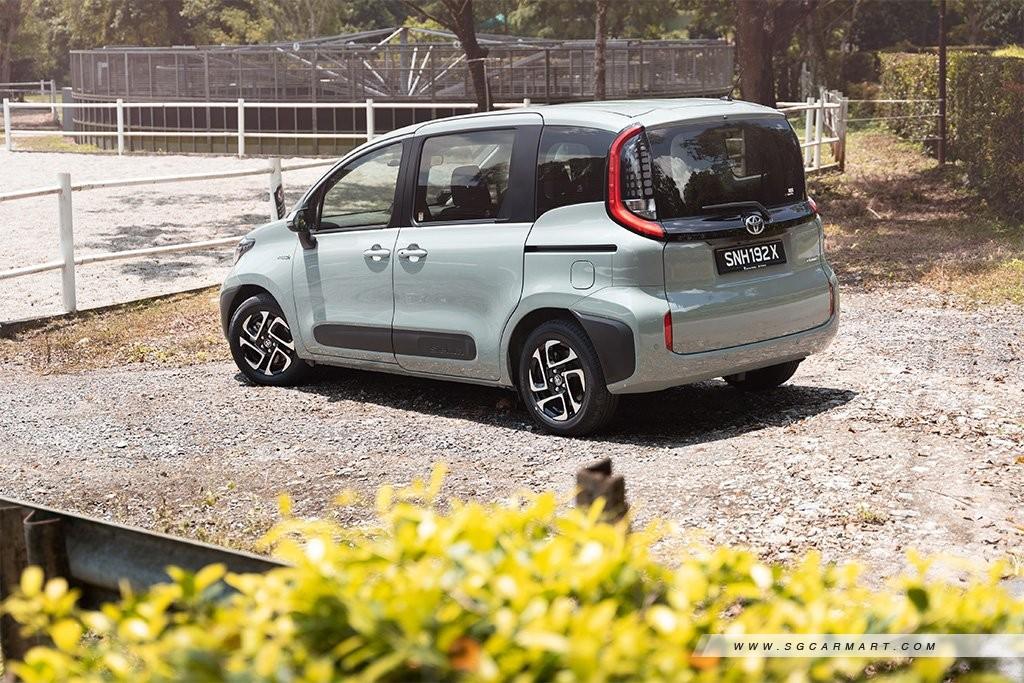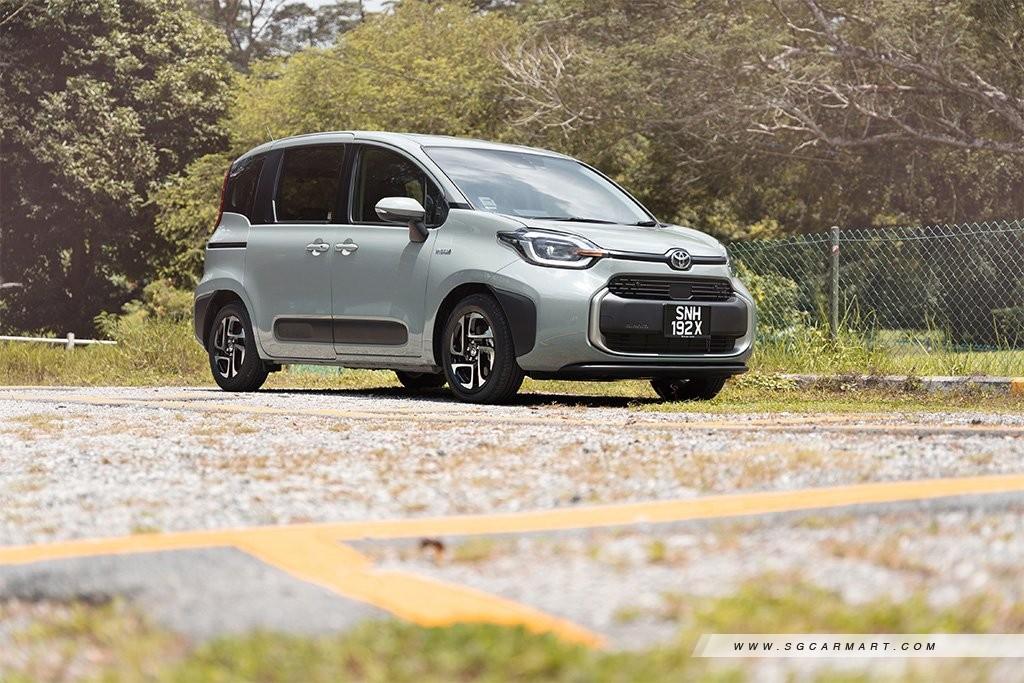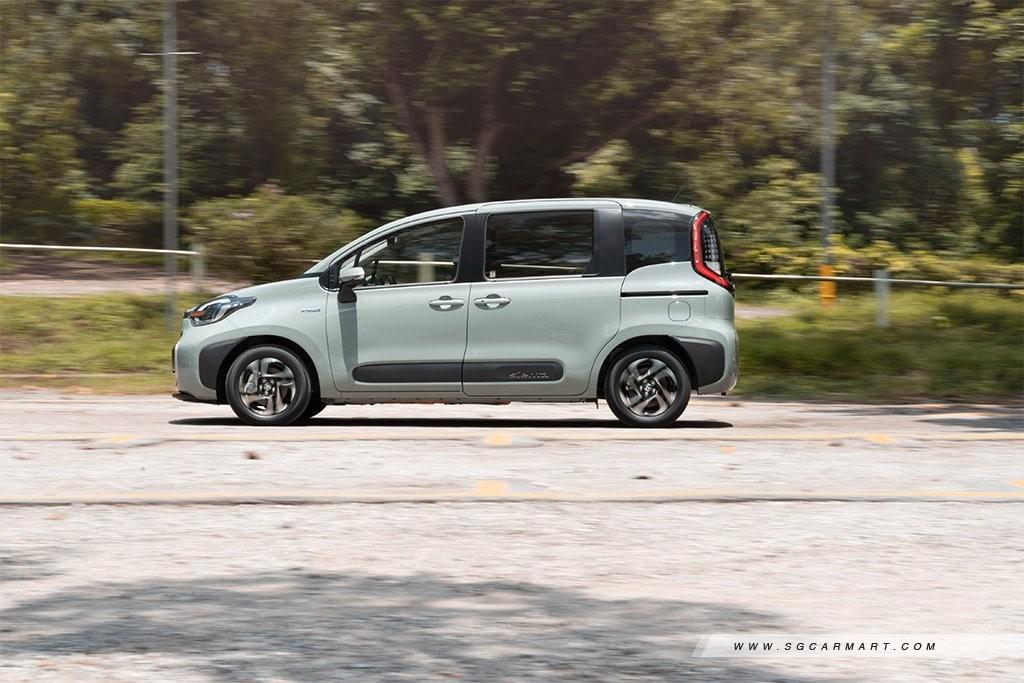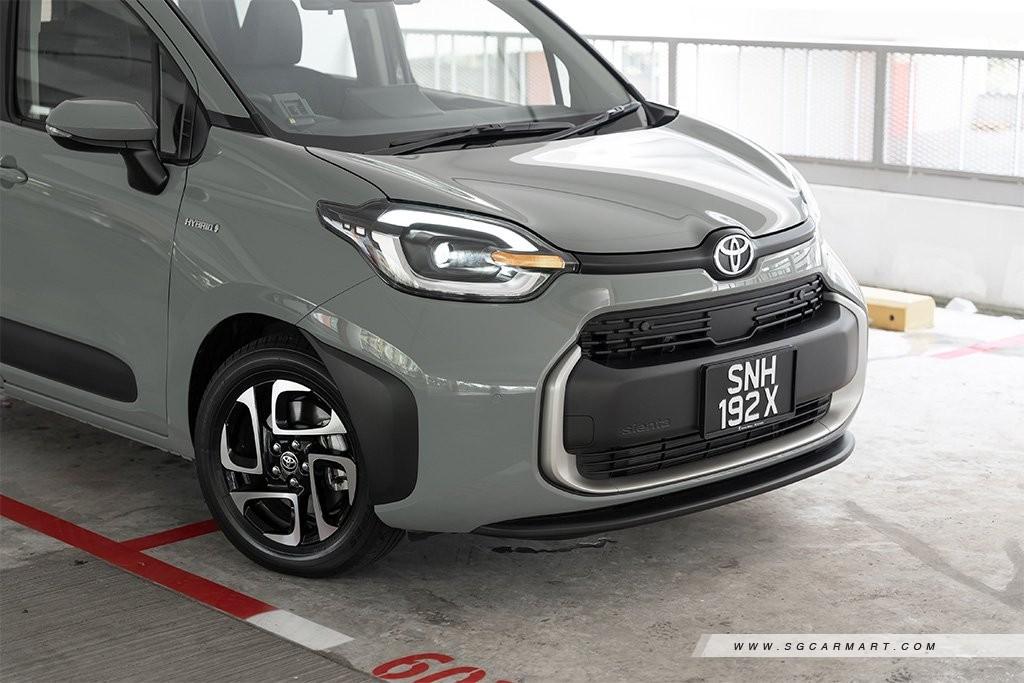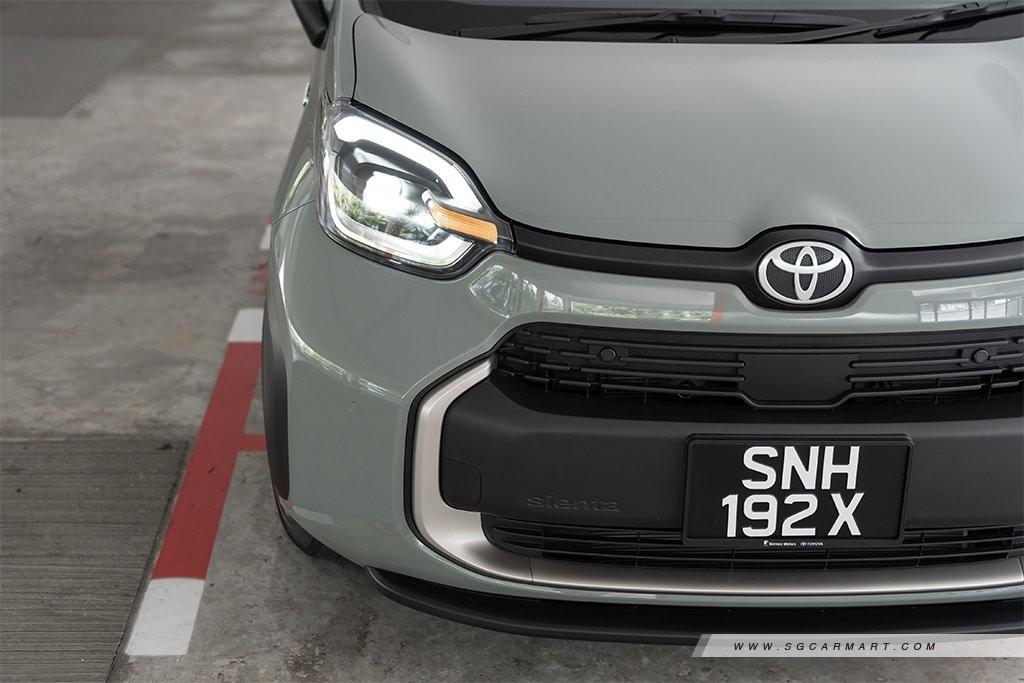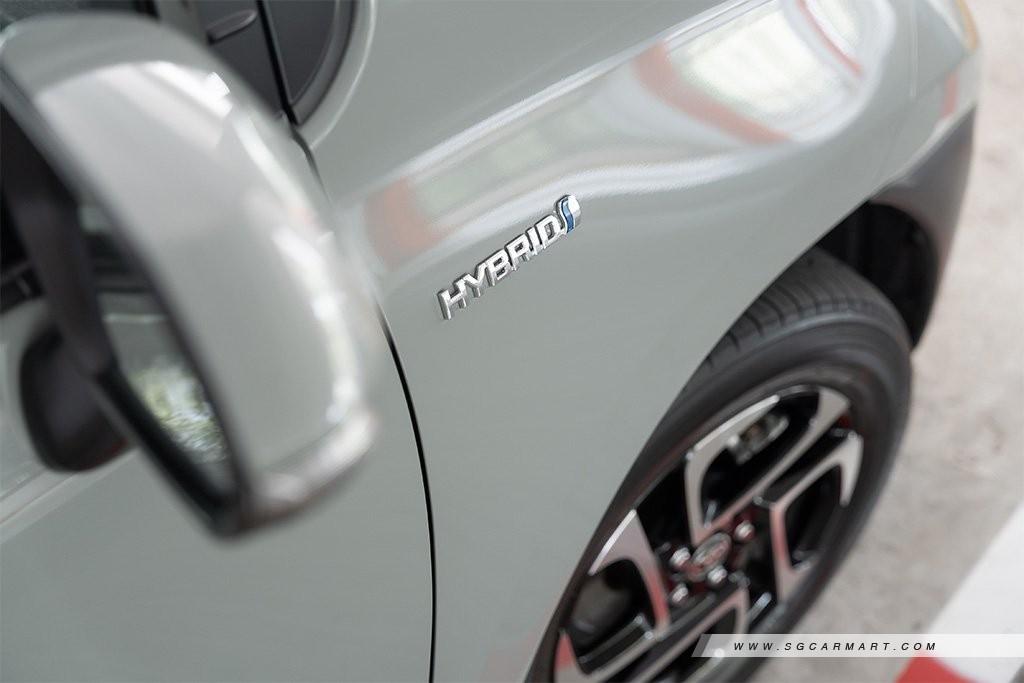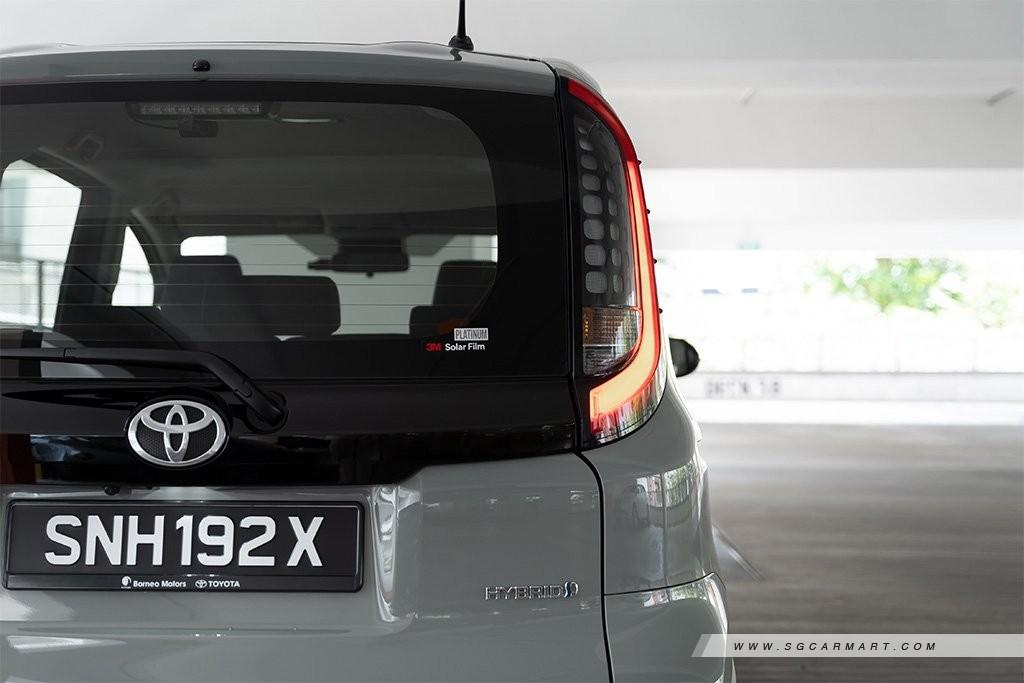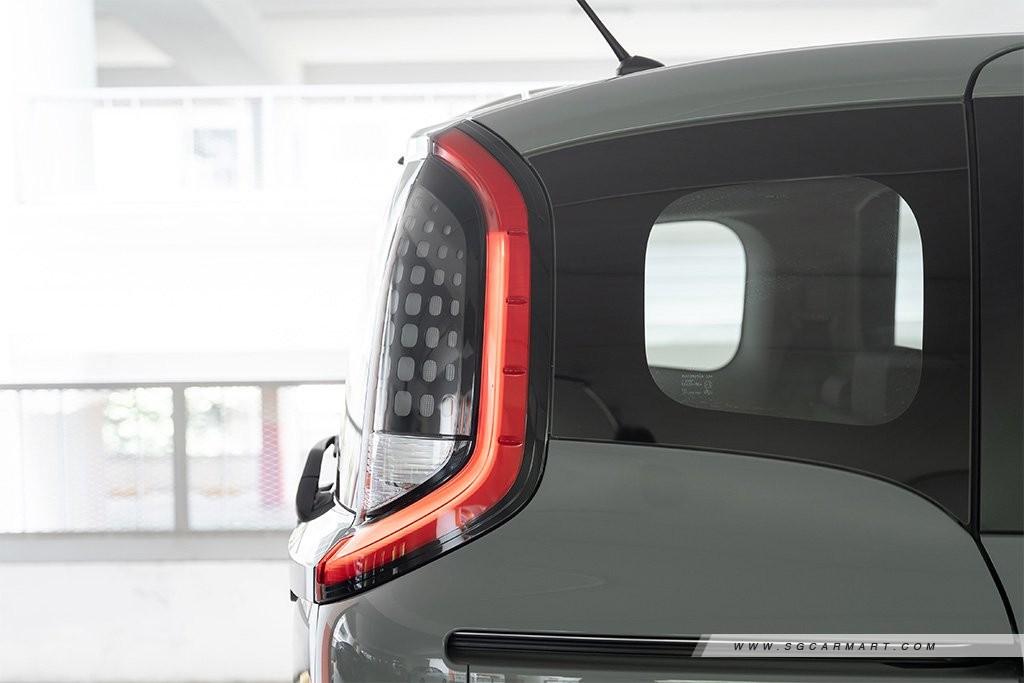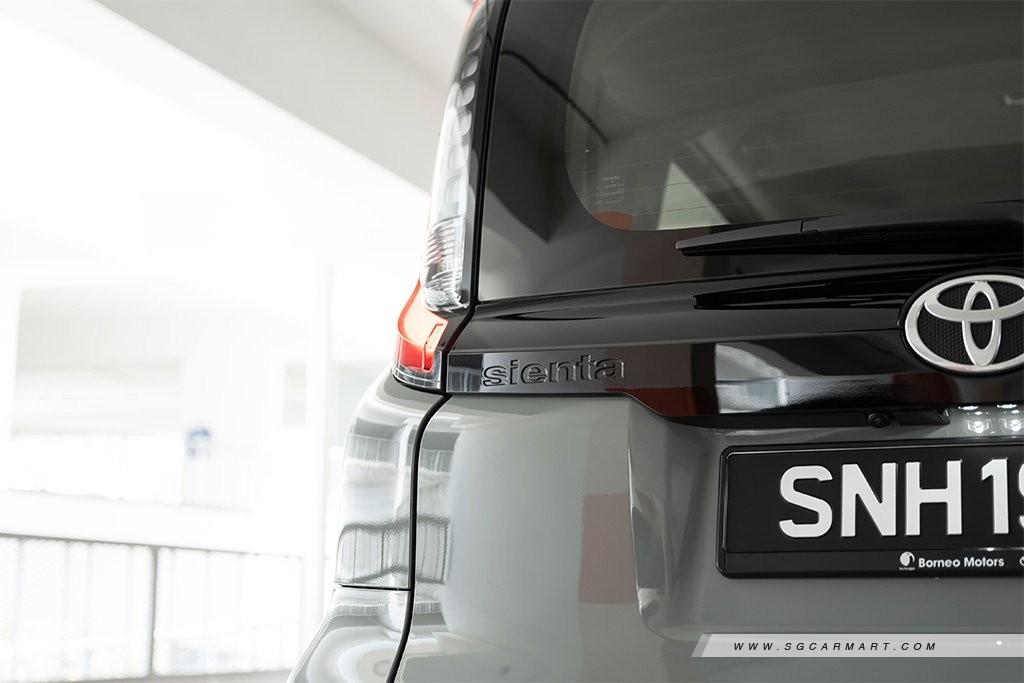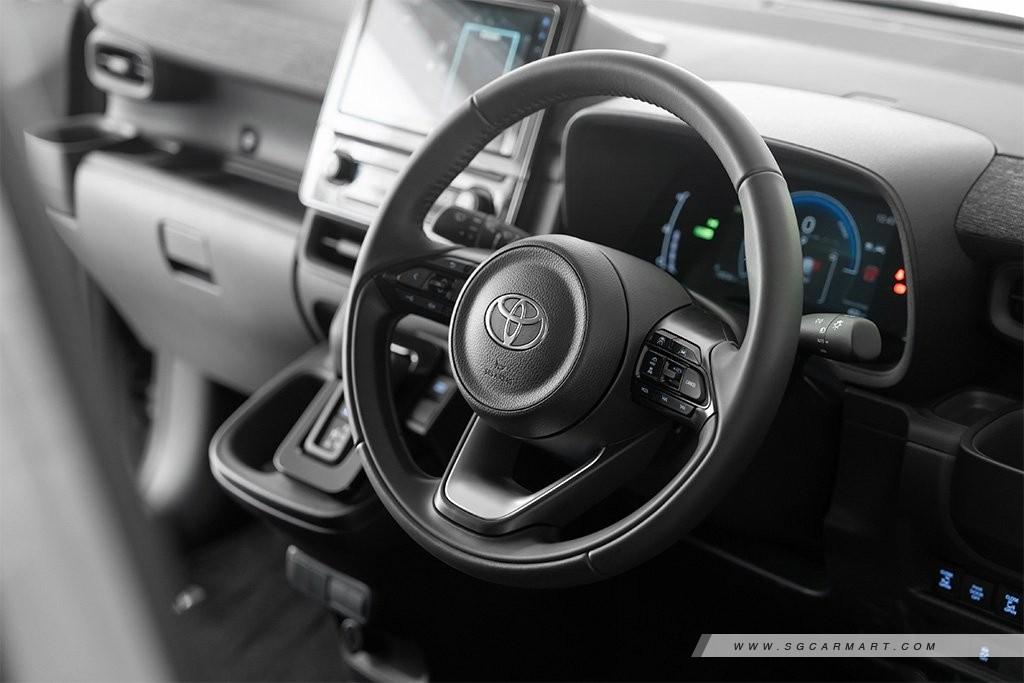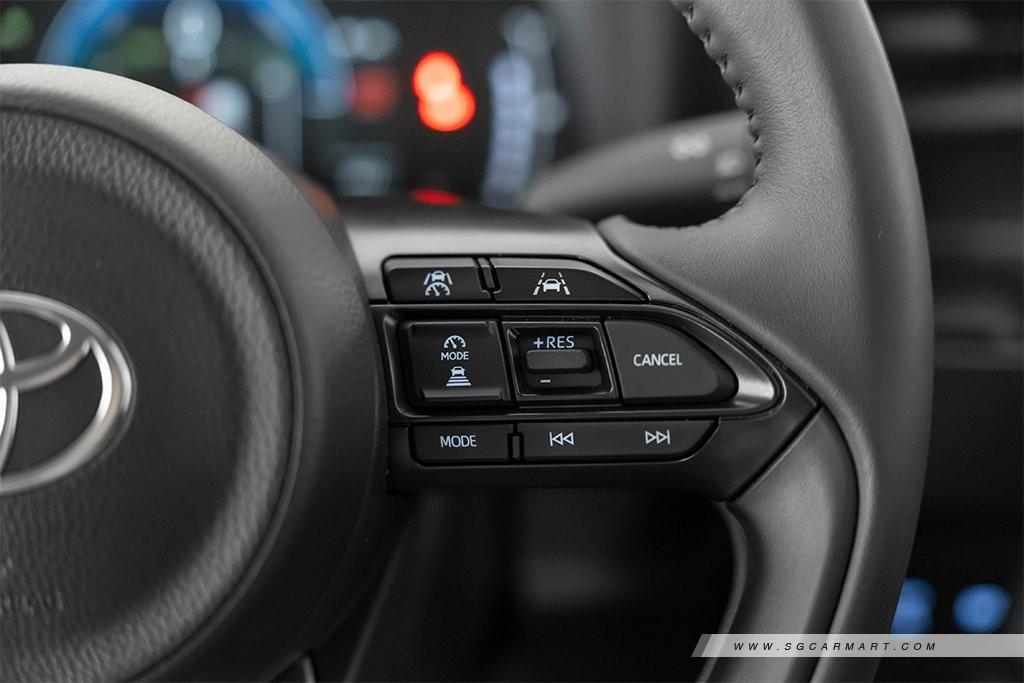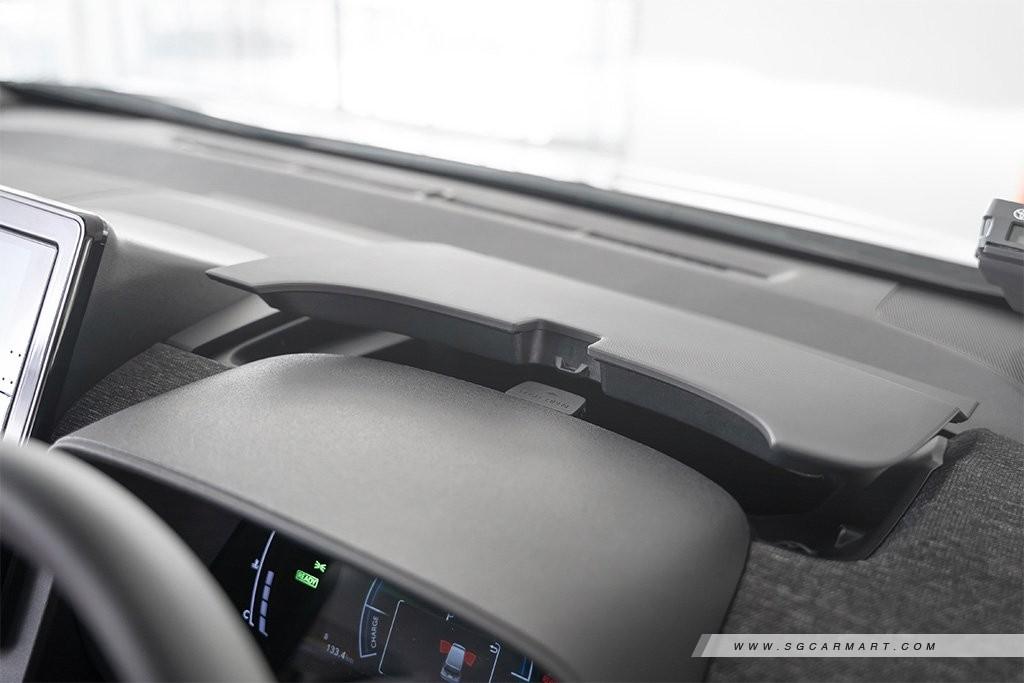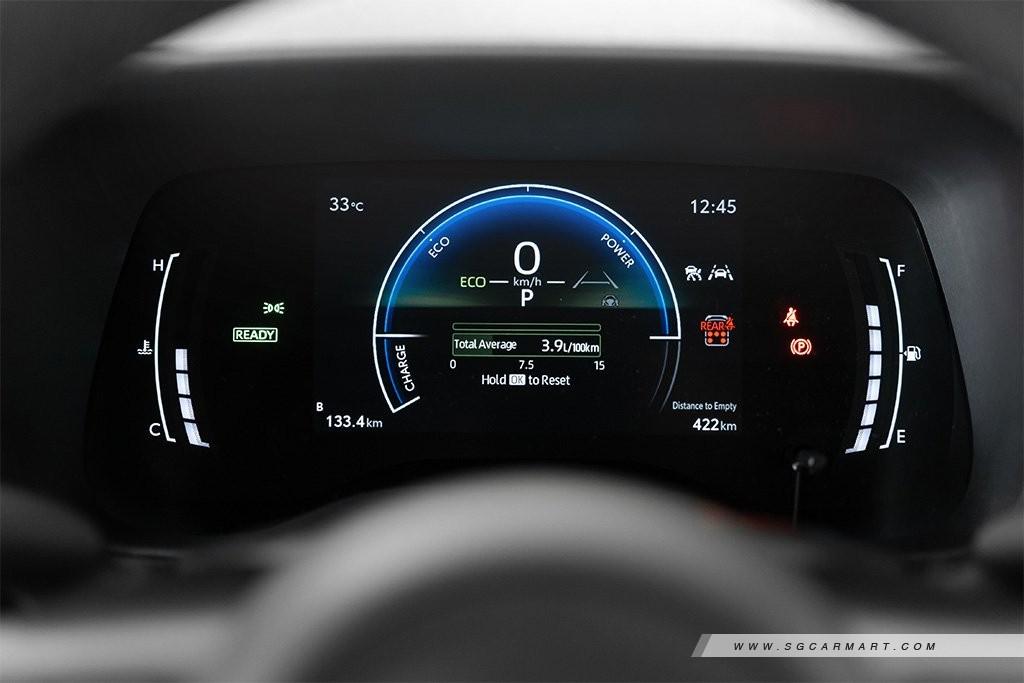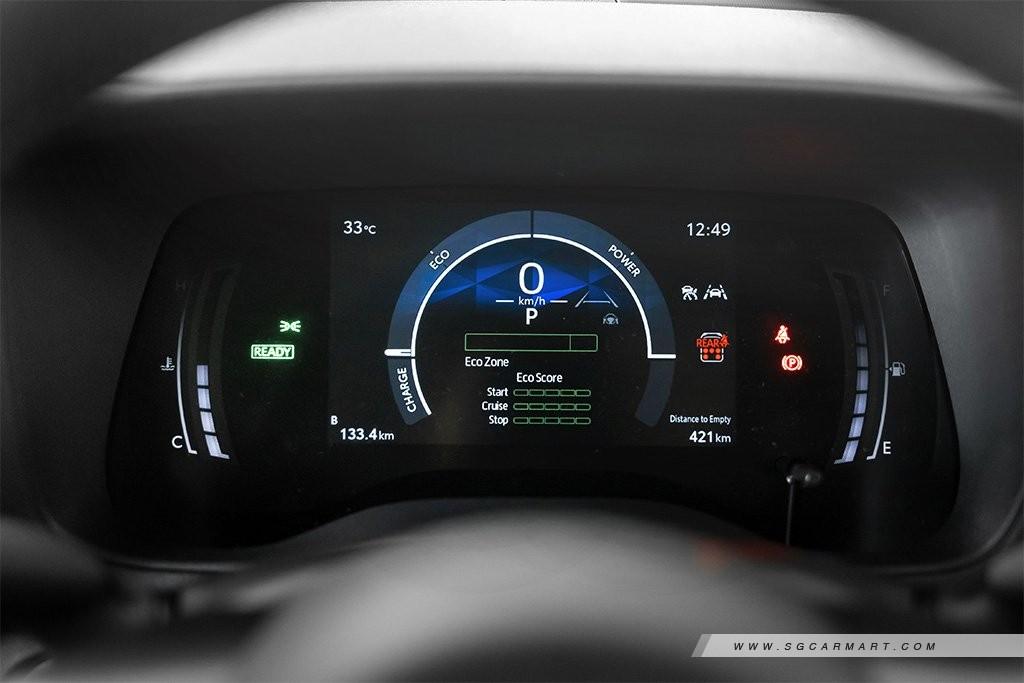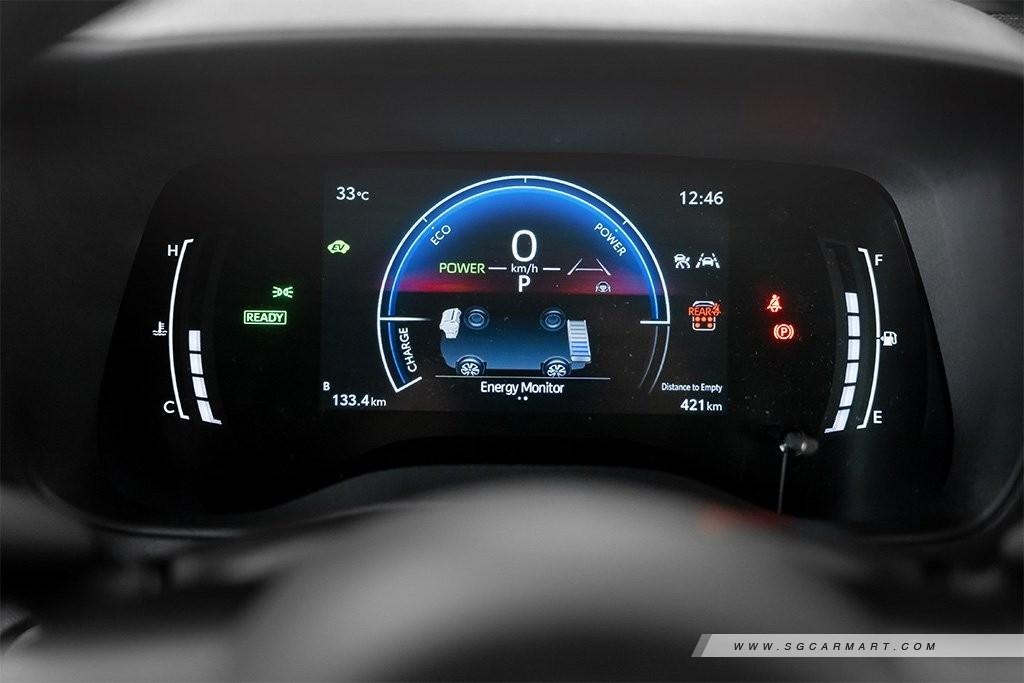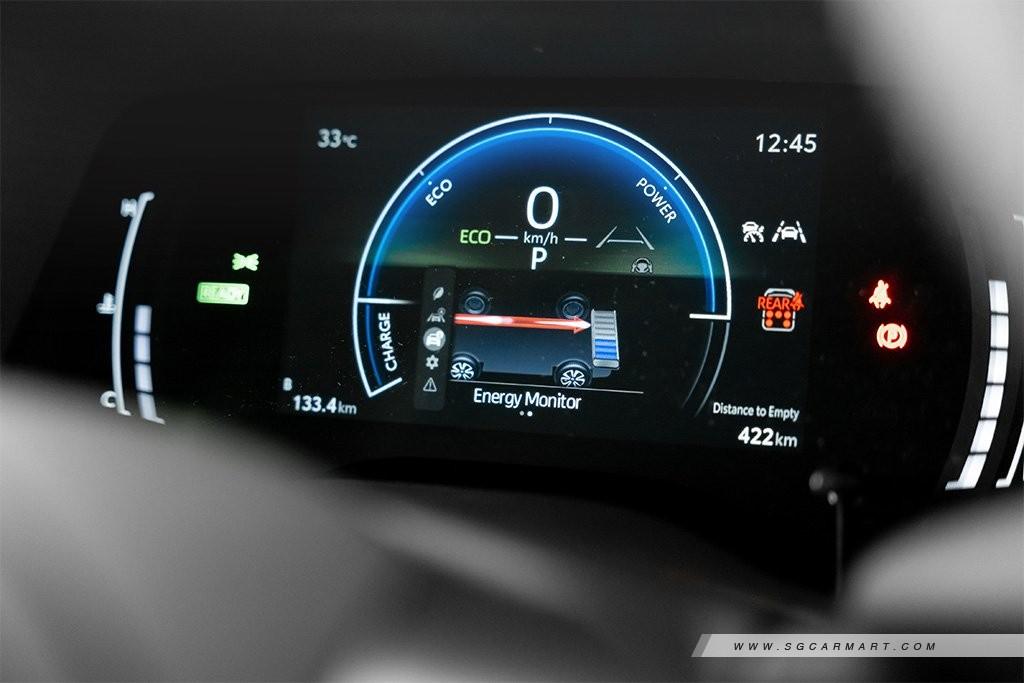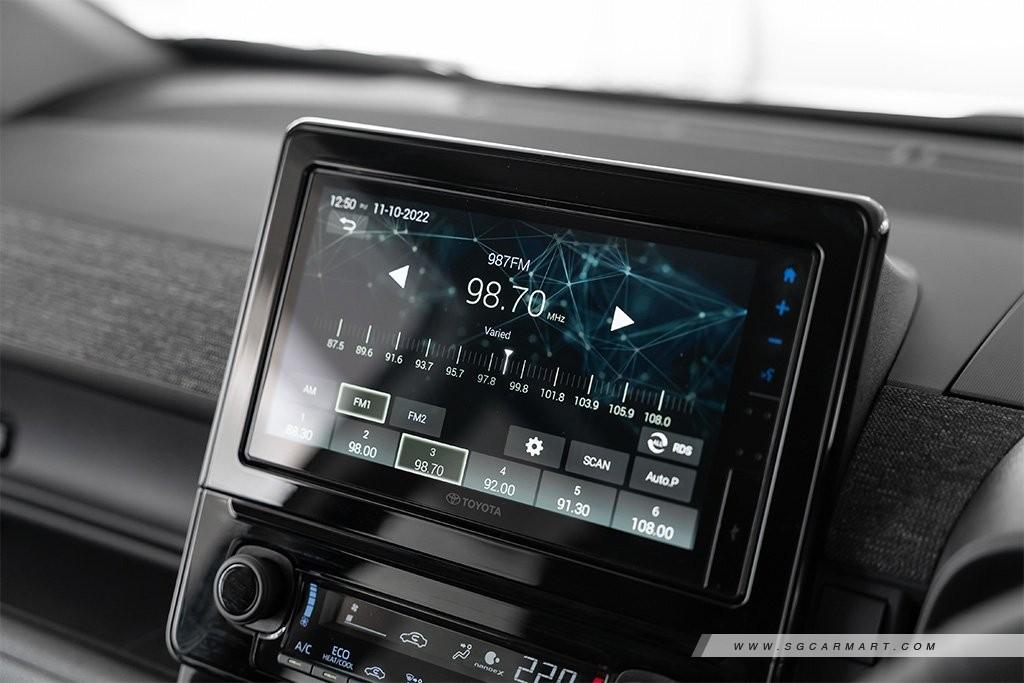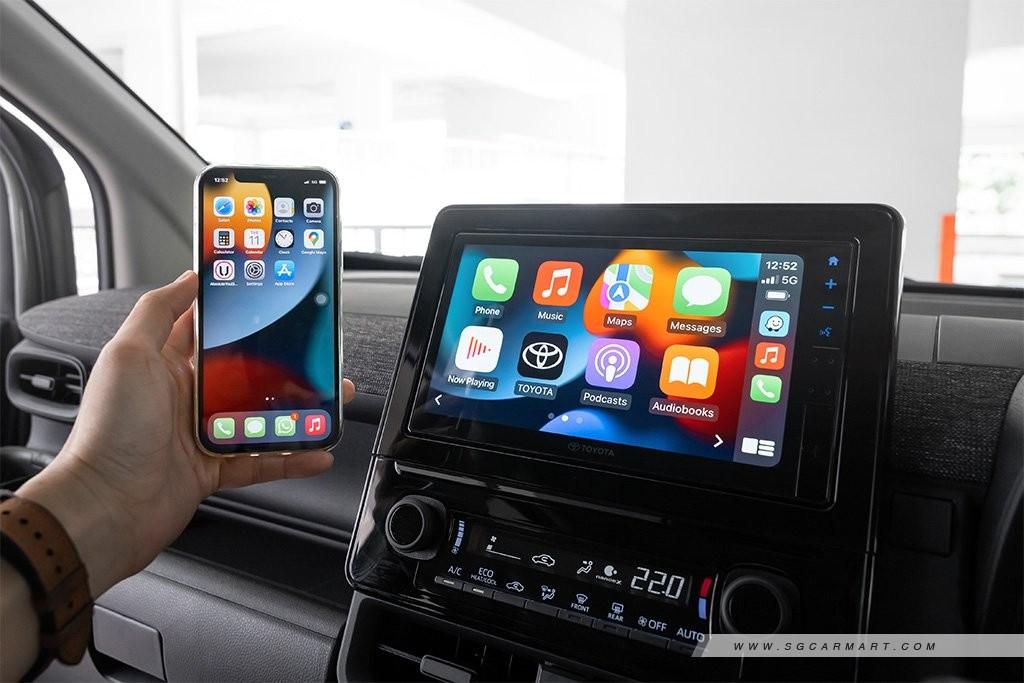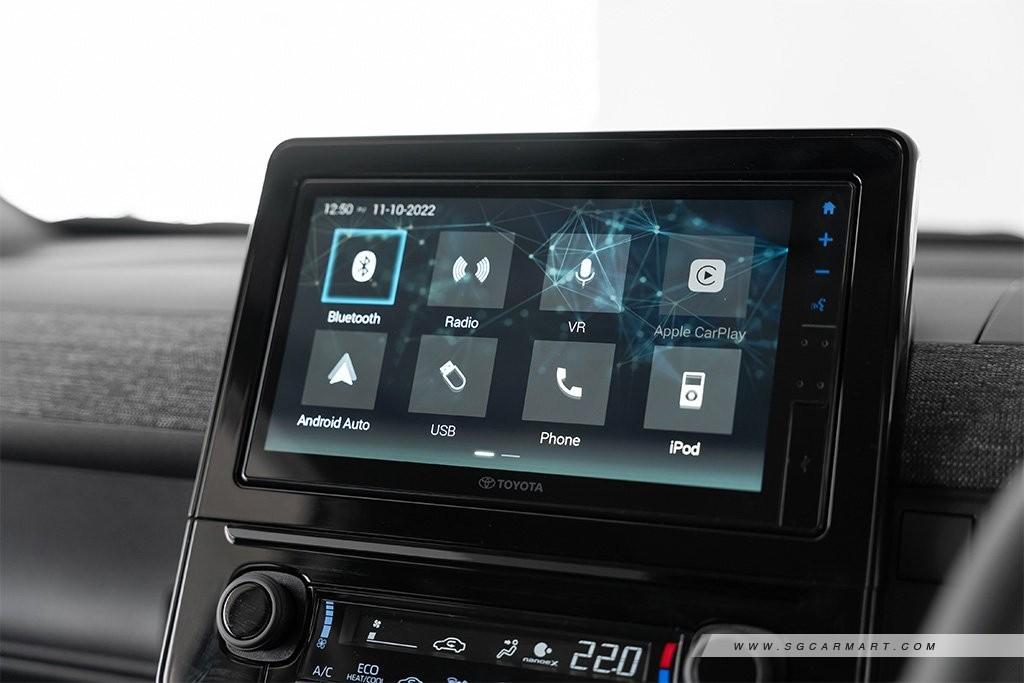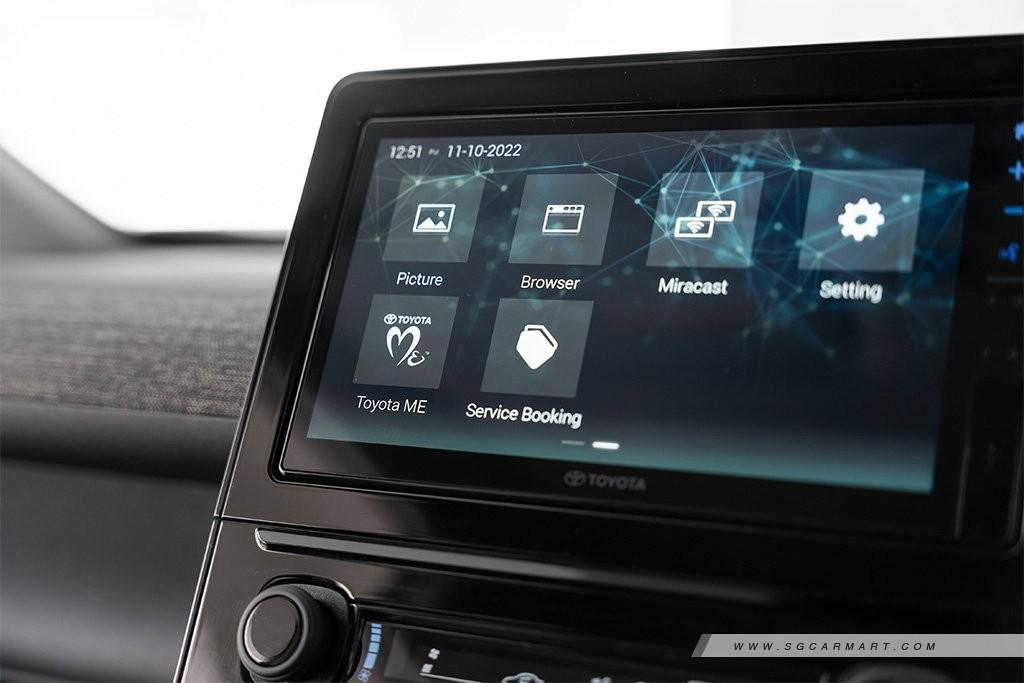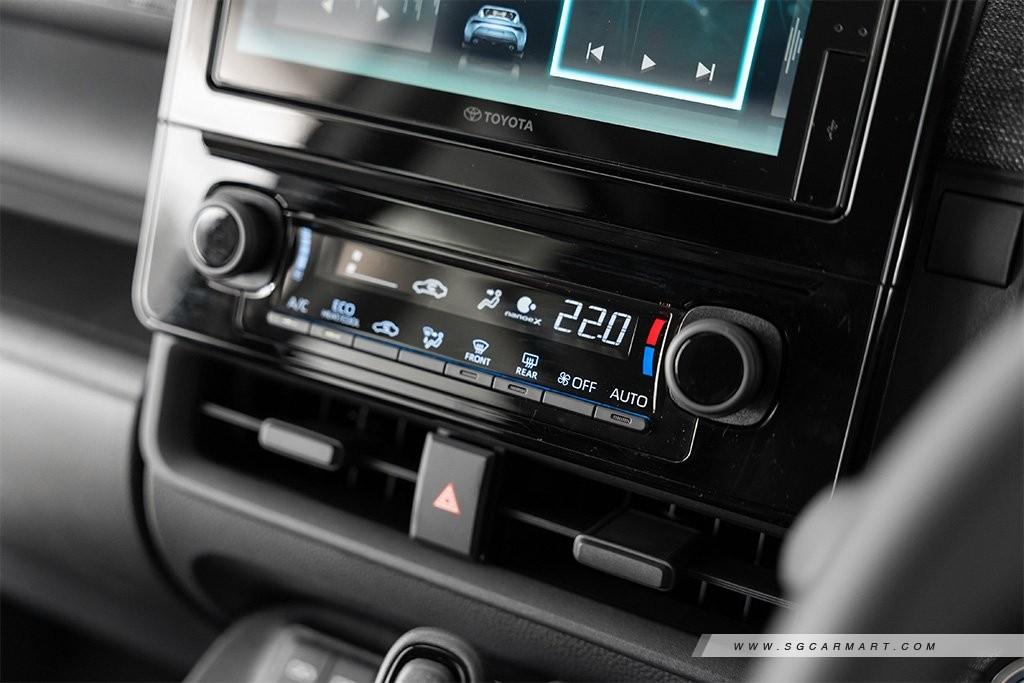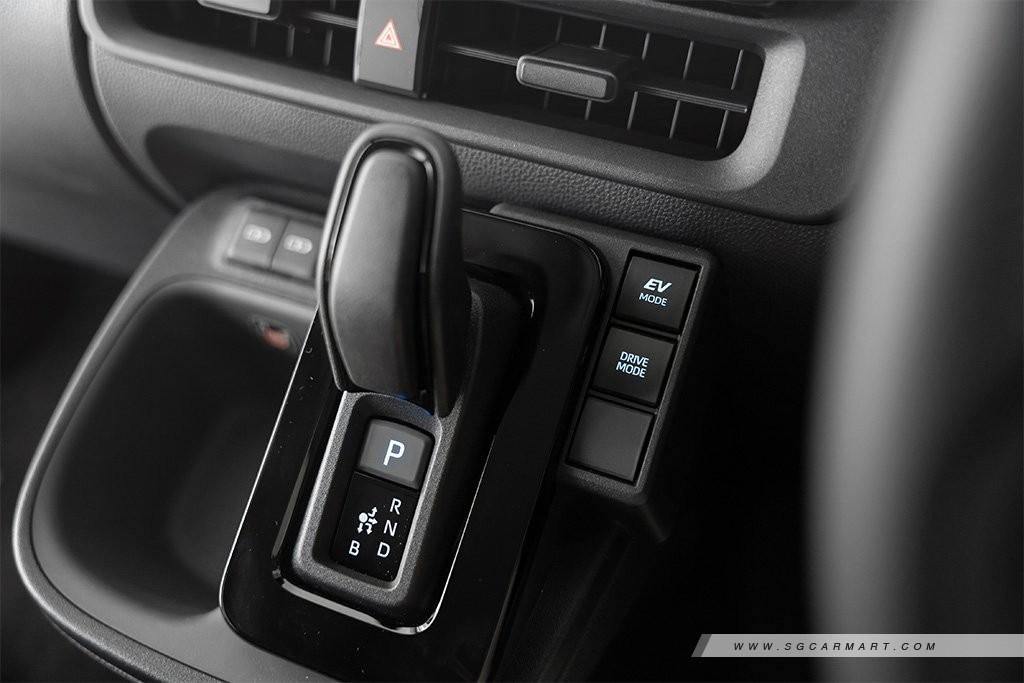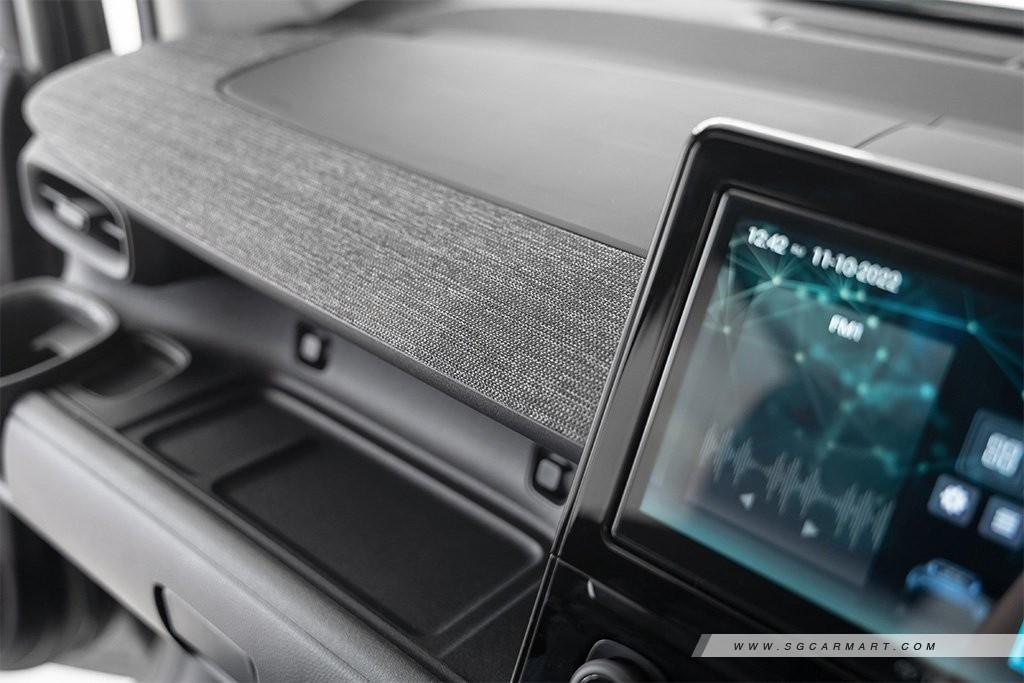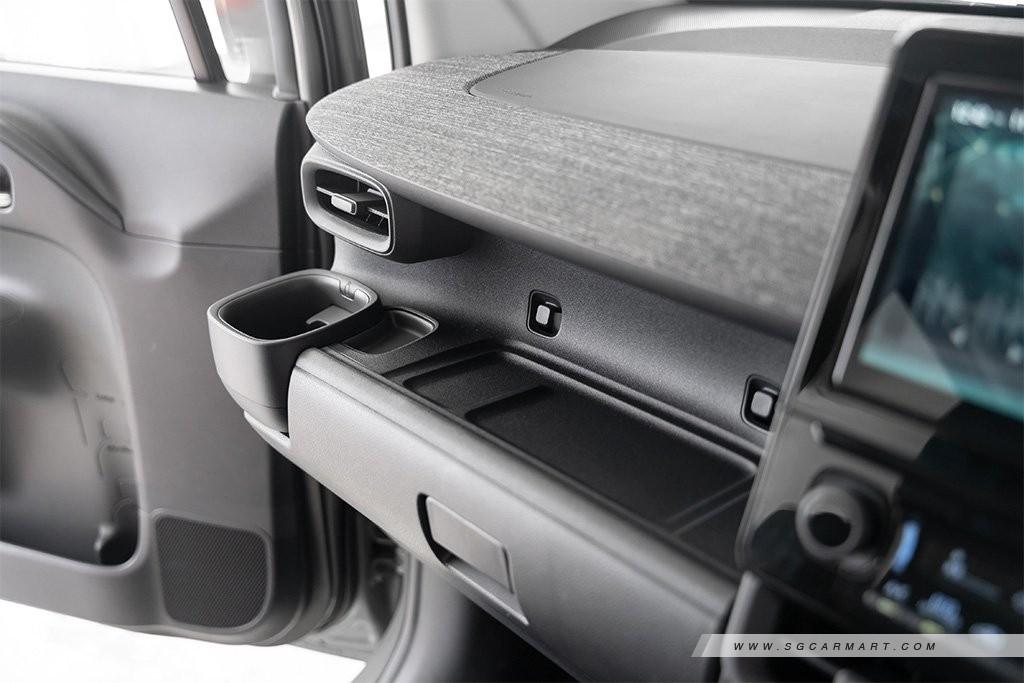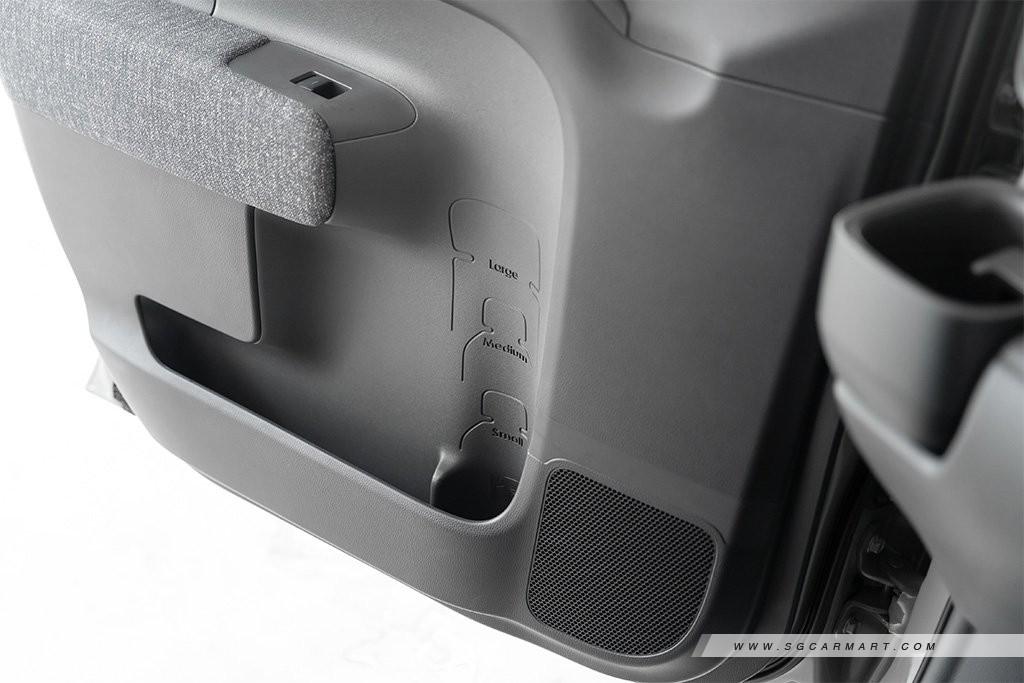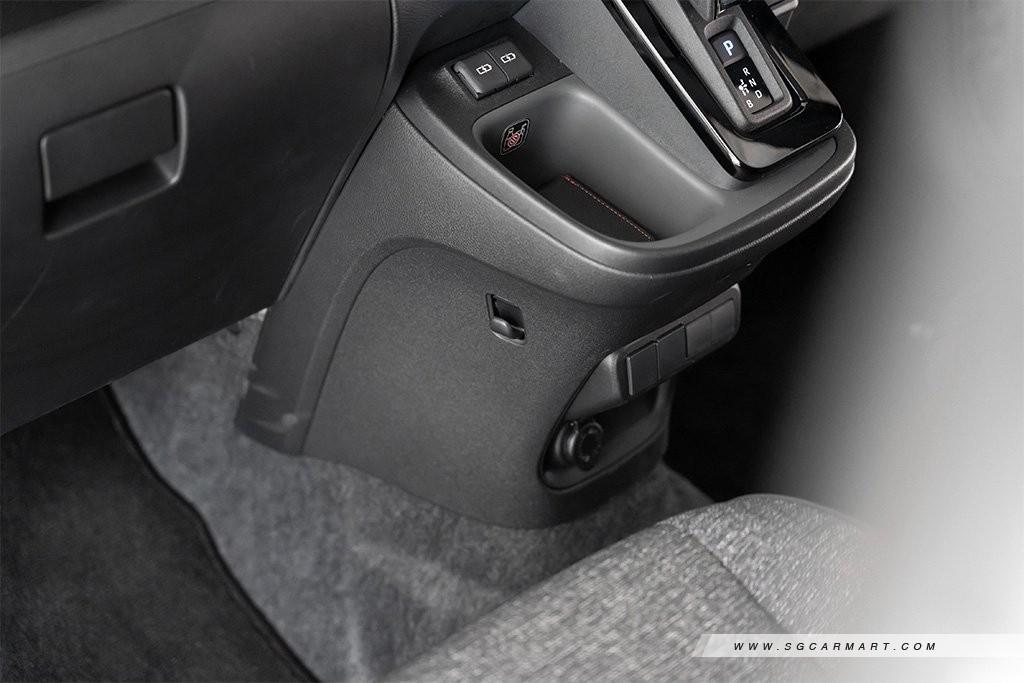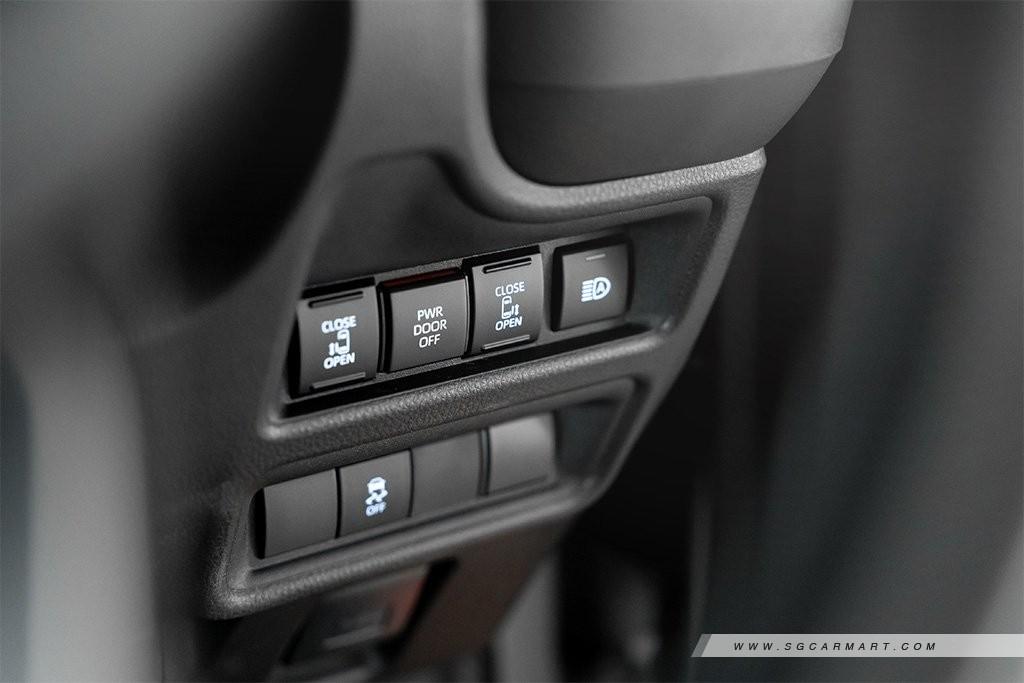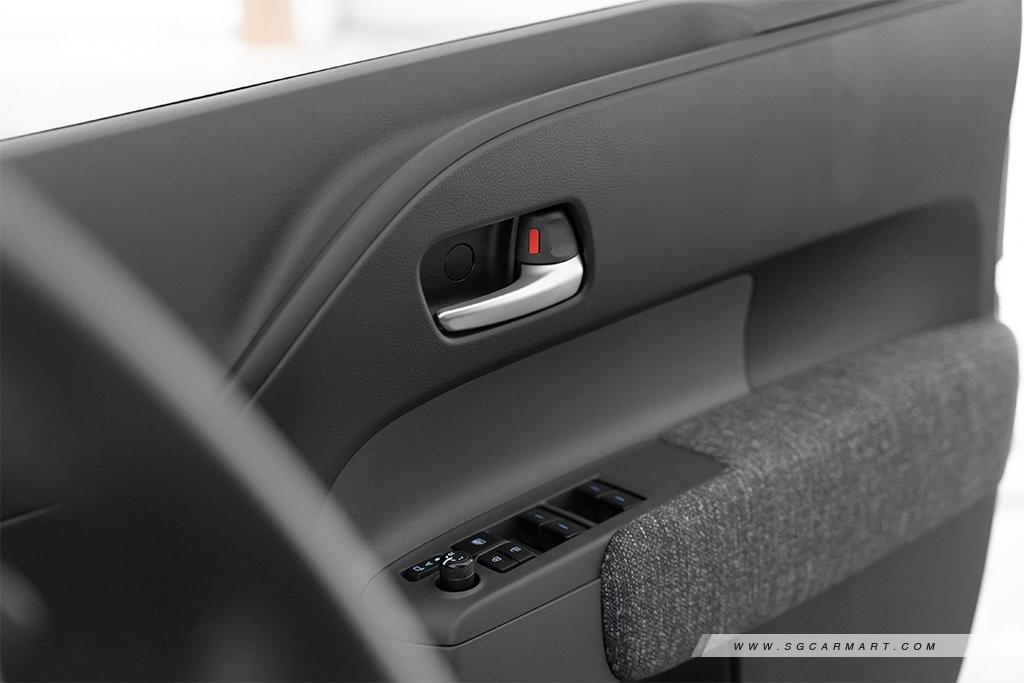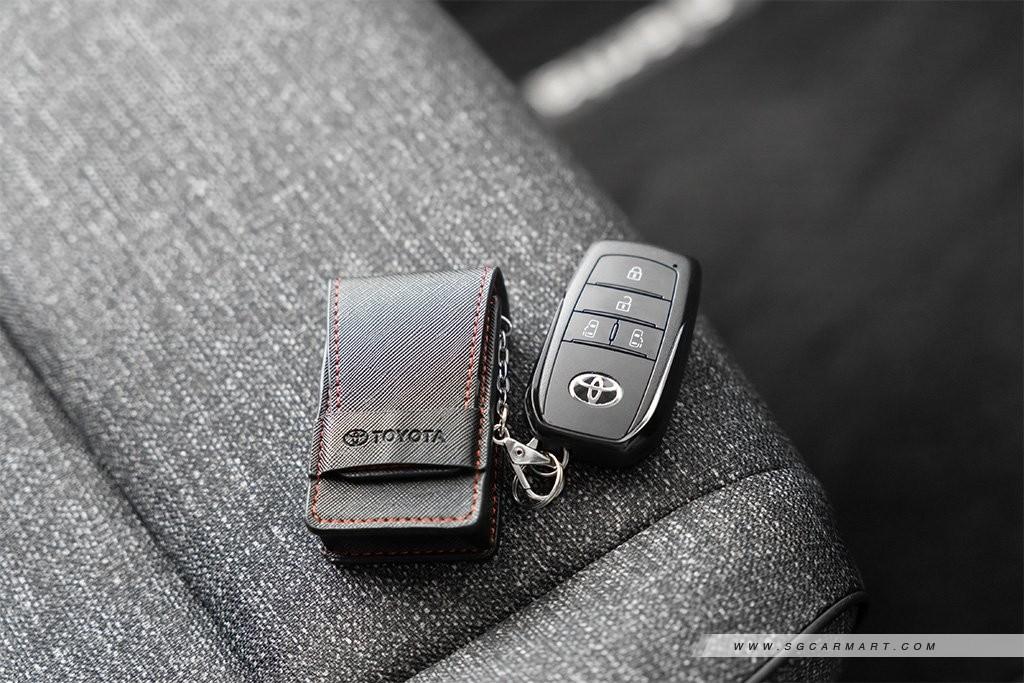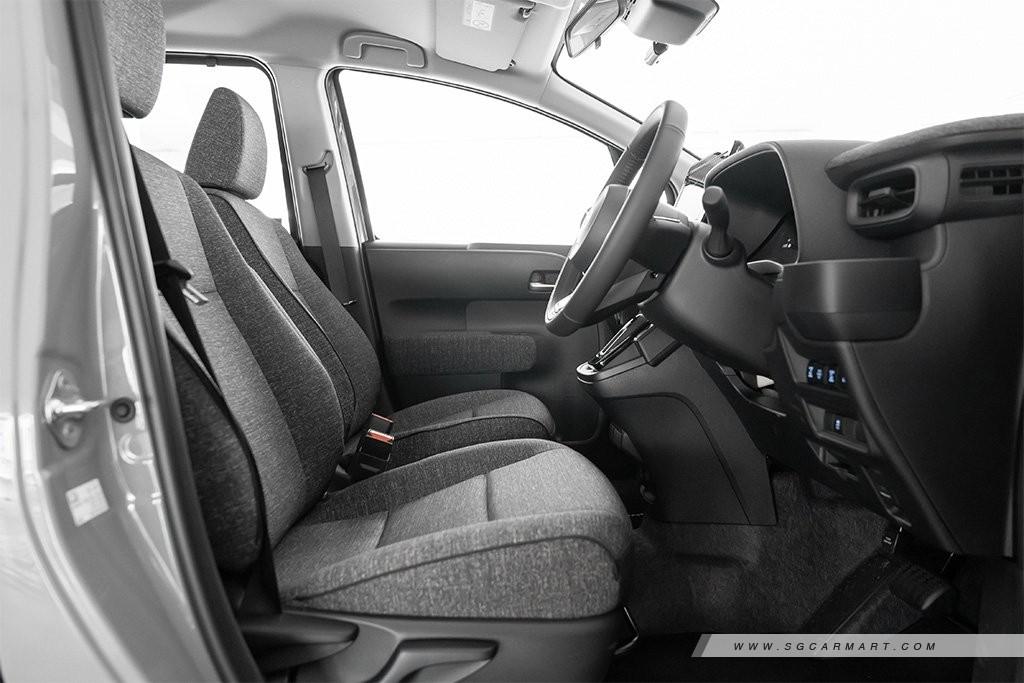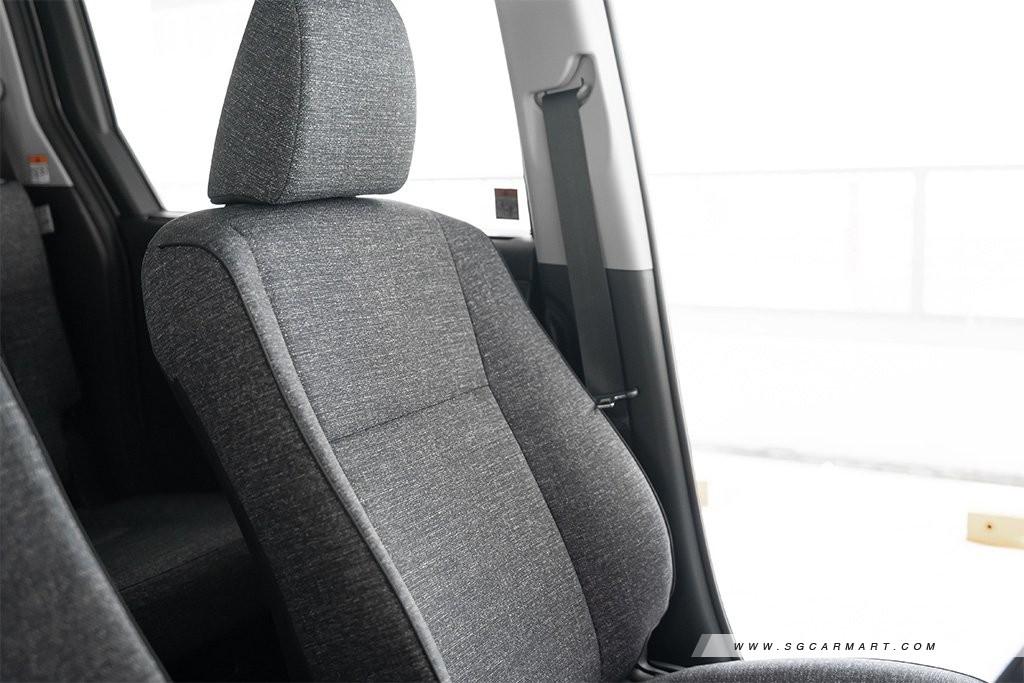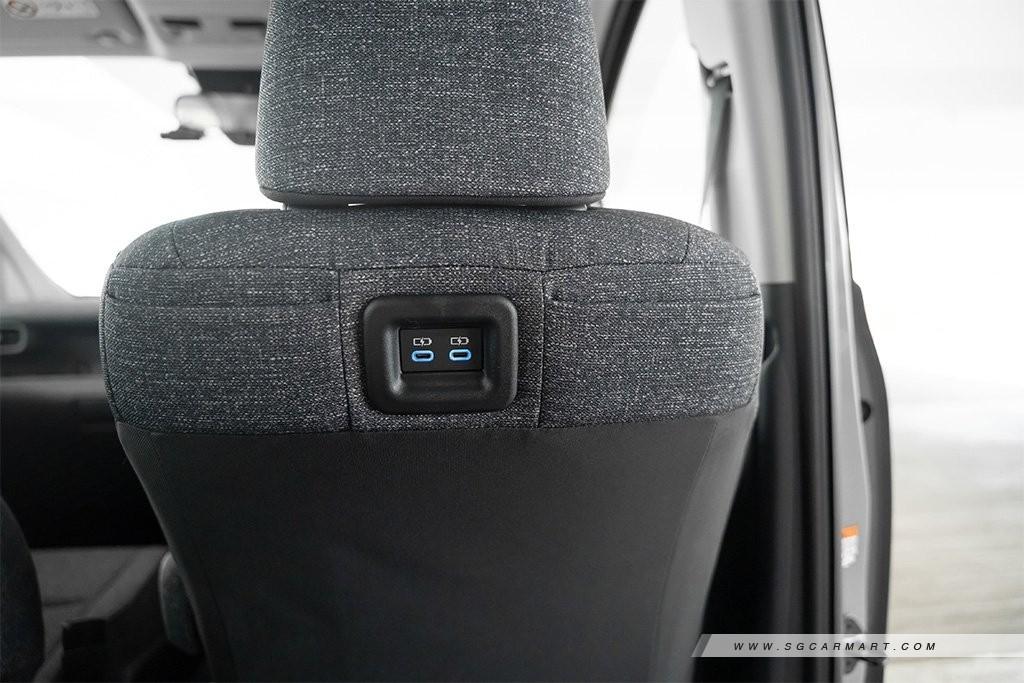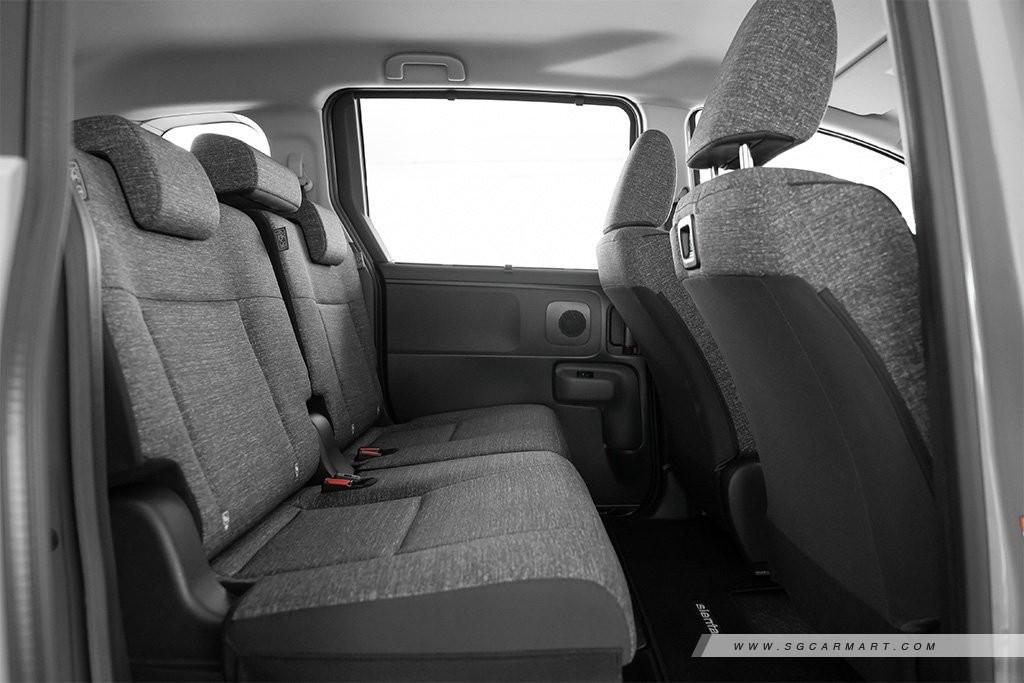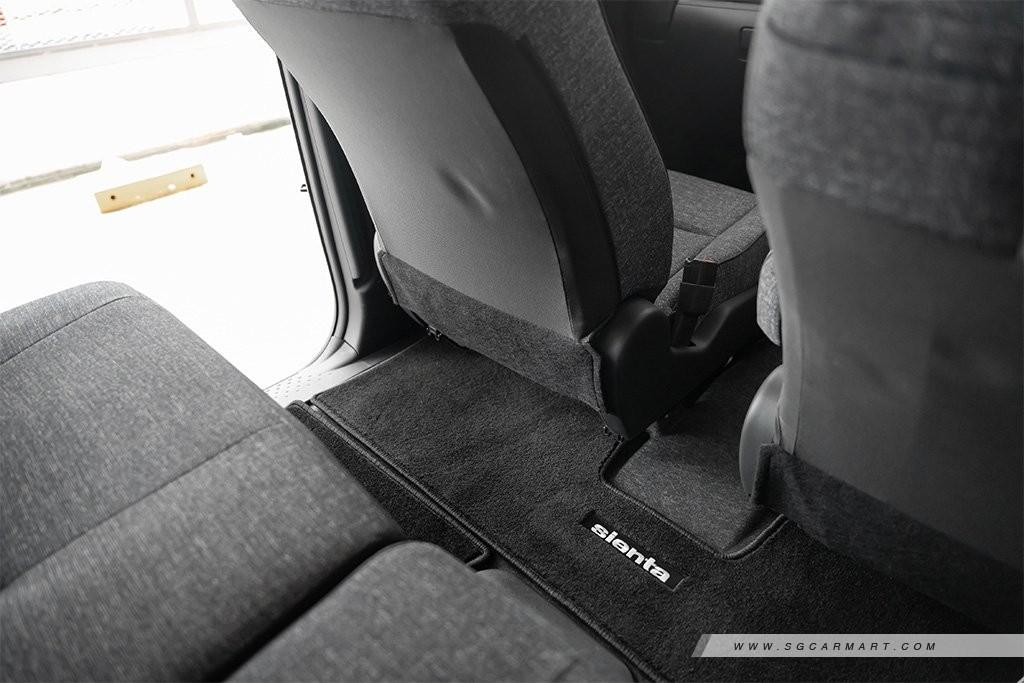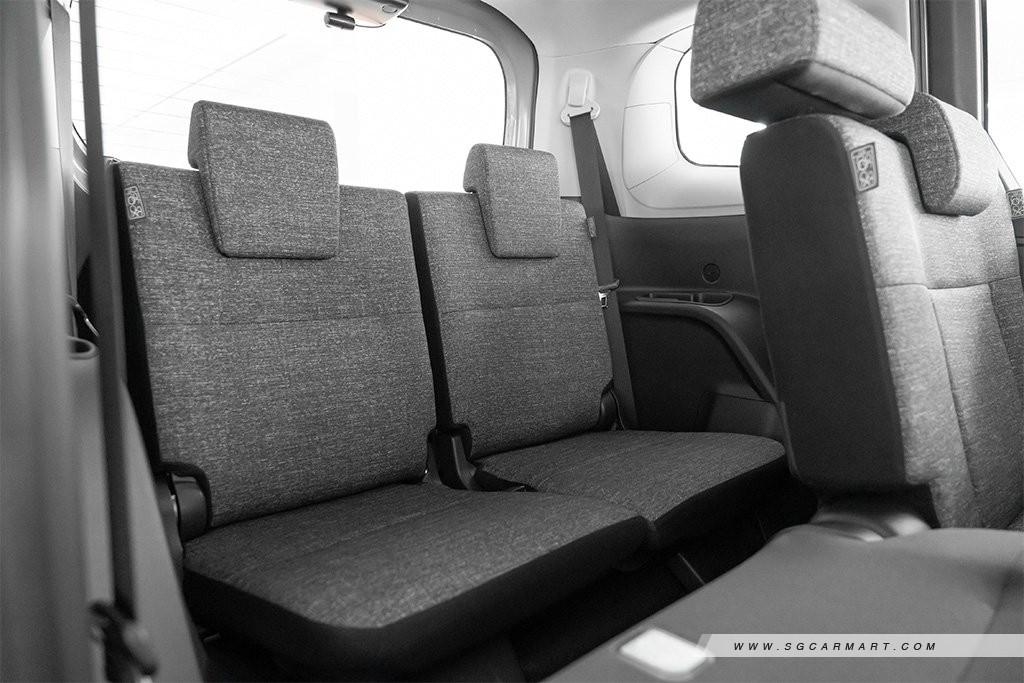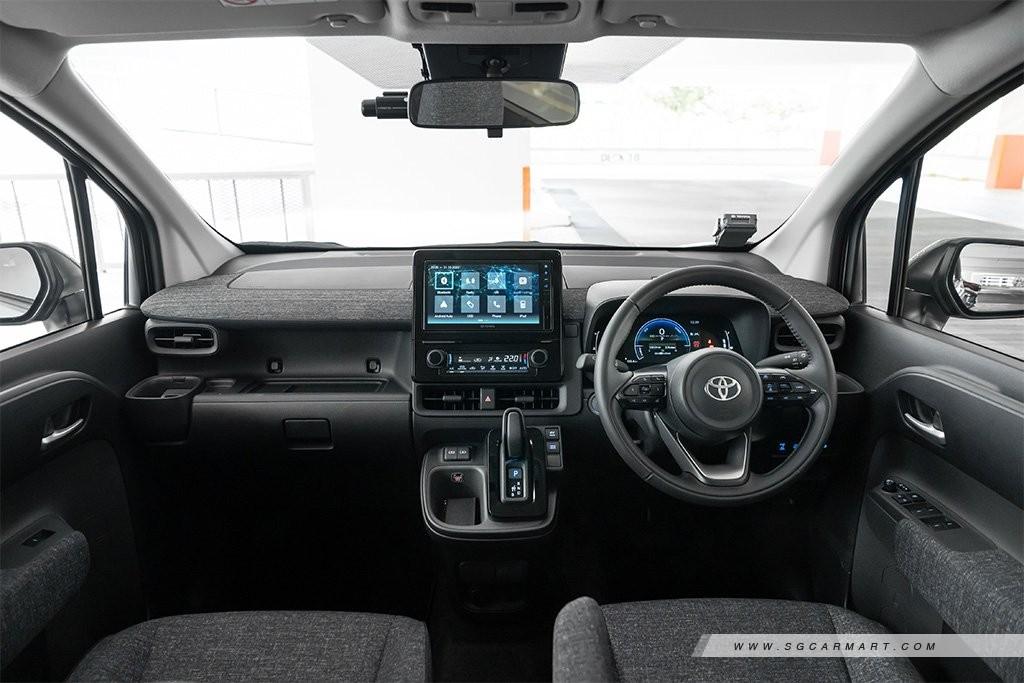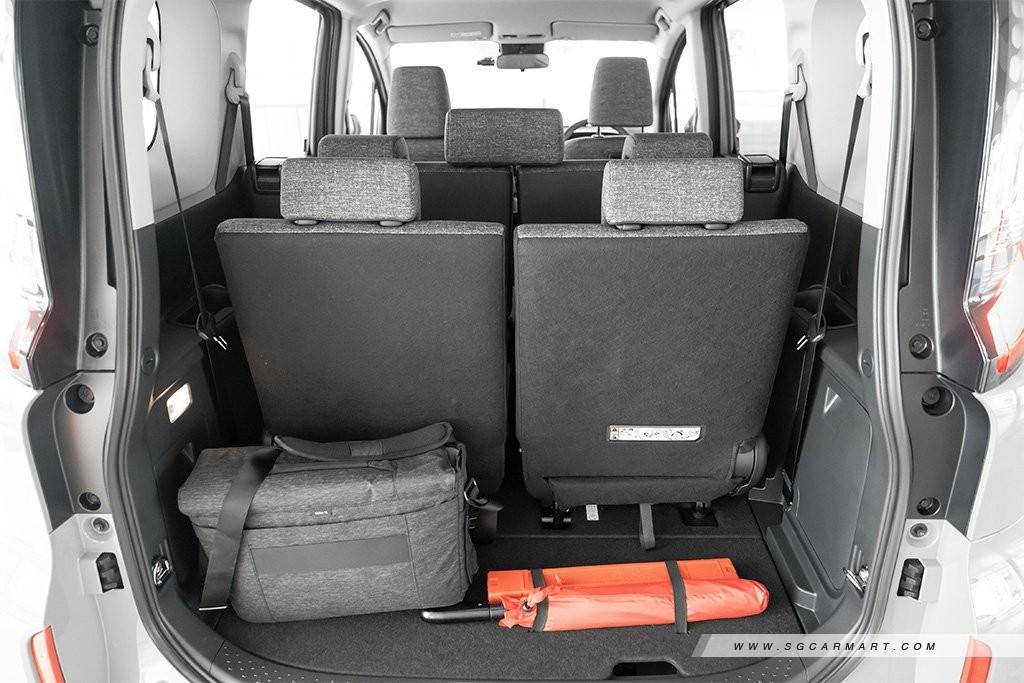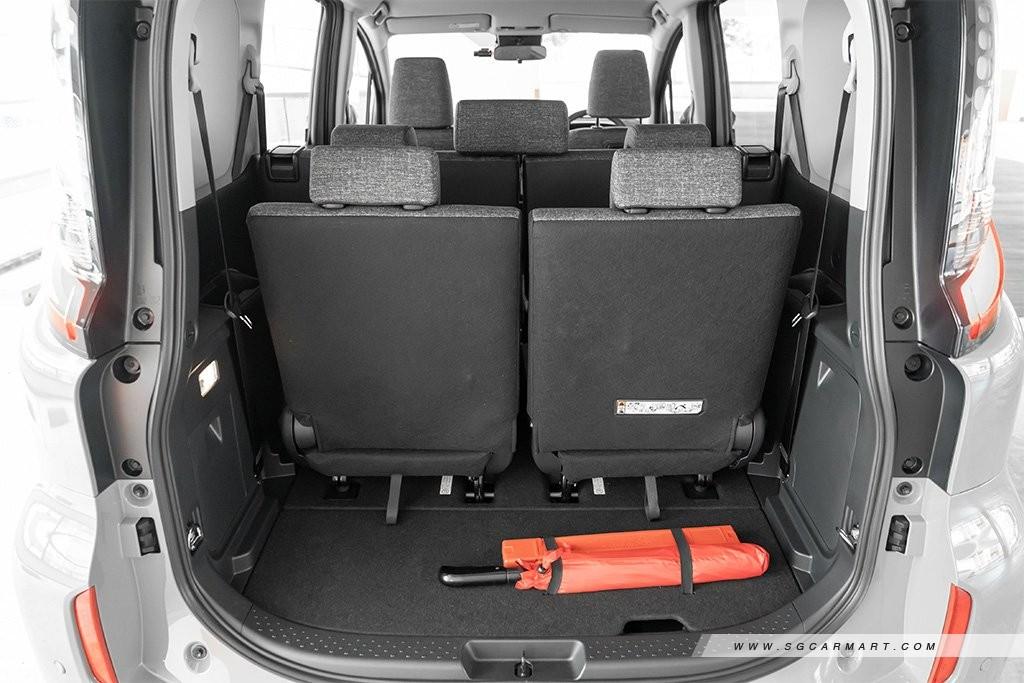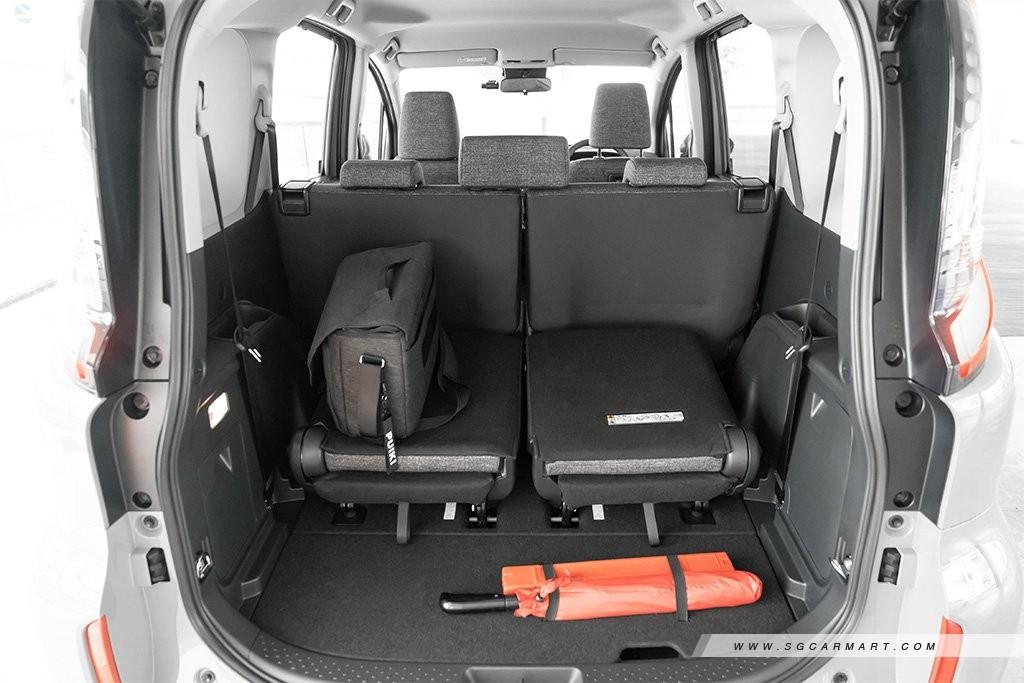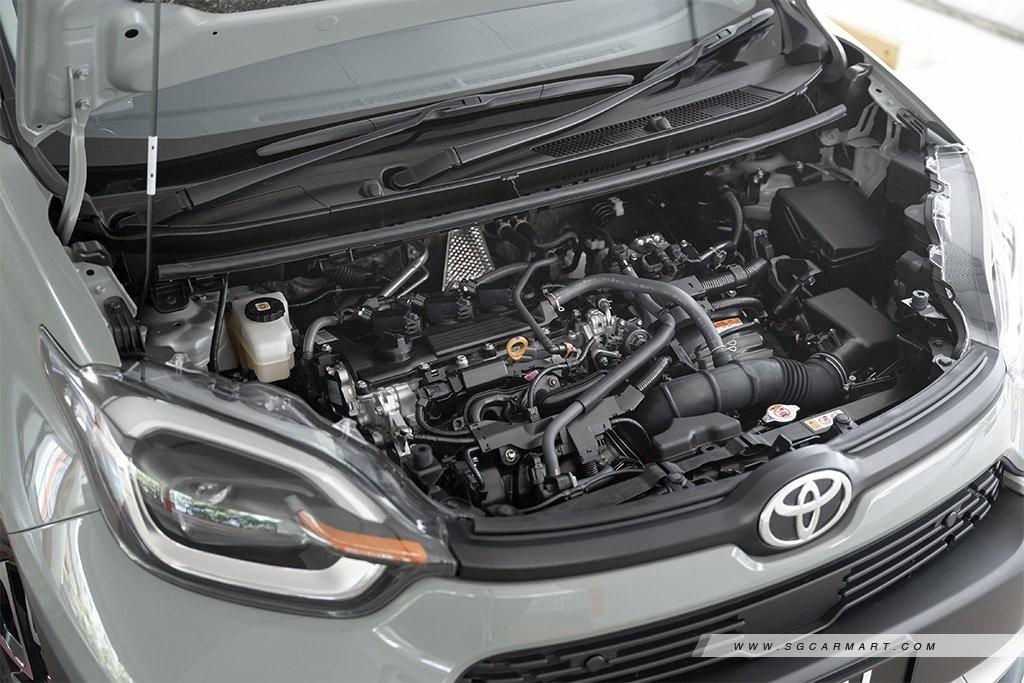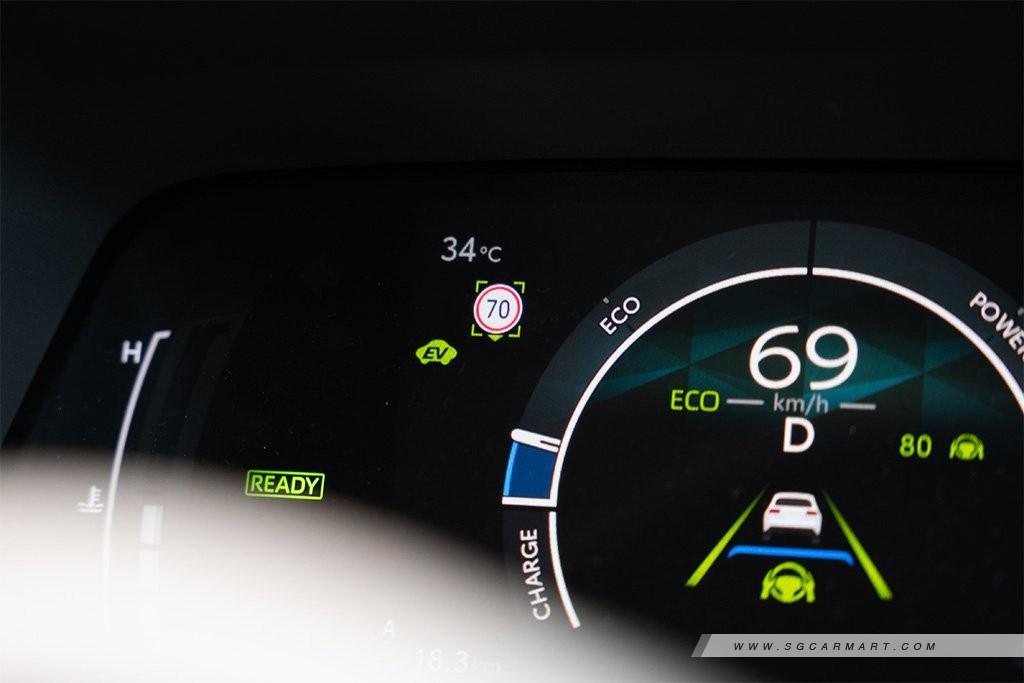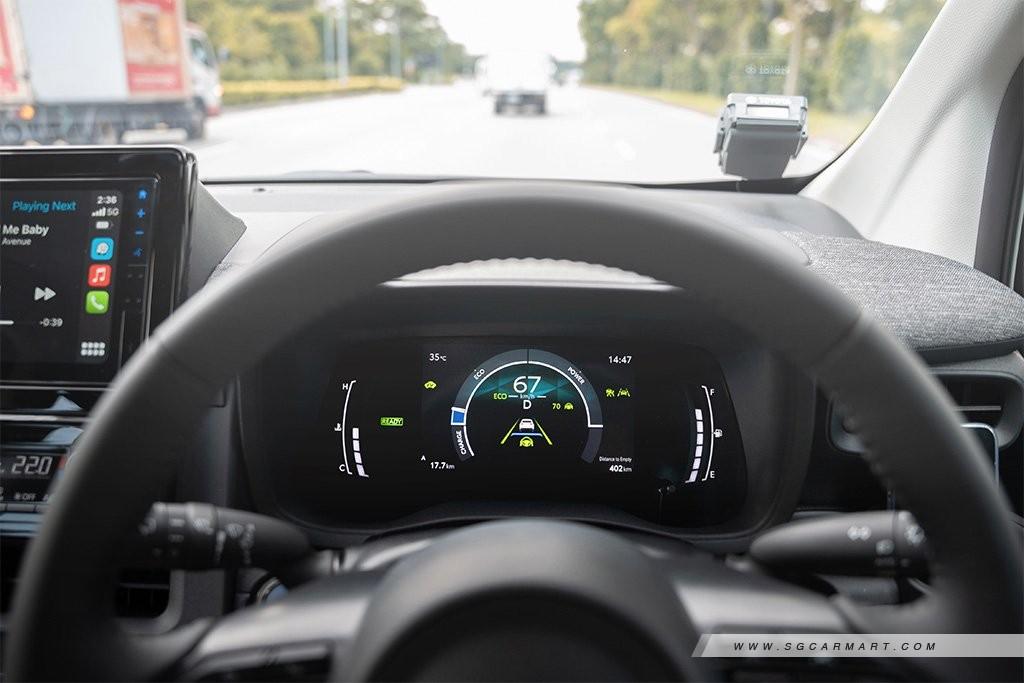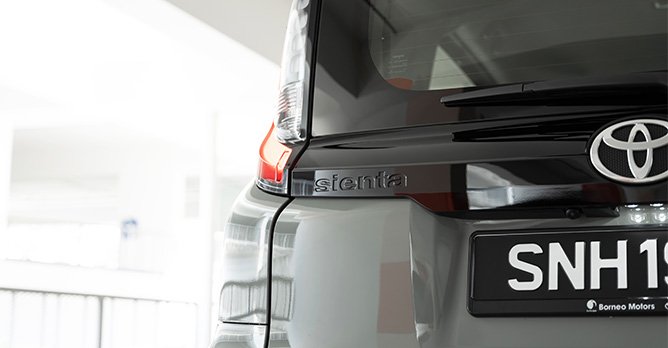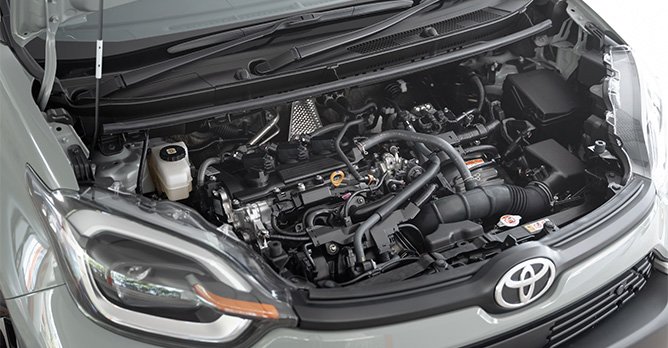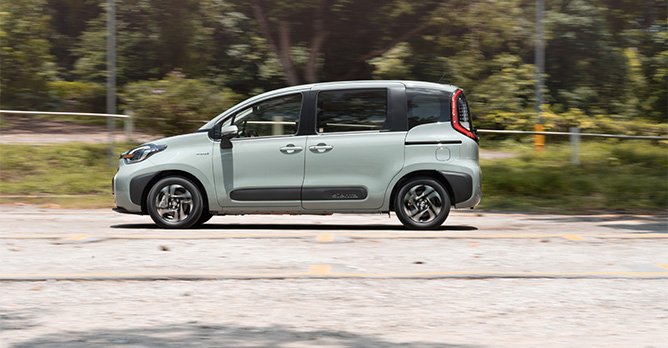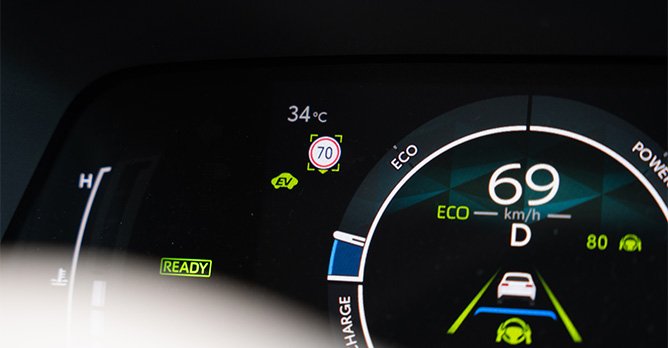Toyota Sienta Hybrid 1.5 Elegance (A) Review
18 Oct 2022|39,985 views
What We Like
Cutesy, cheerful demeanour
Use of fabric-like surfaces within the interior
Significantly improved refinement over its predecessor
Ferrying capabilities remain nearly unmatched in something of its size
What We Dislike
Styling cues might not hold universal appeal
No aircon vents for rear passengers
Let's face it: A world without point A-to-B vehicles would look very different, and not necessarily for the better too. We admire the vibrancy and beauty of flowers in the garden, but it is the mass of green all around, after all, that helps to complete the picture. Not every car can stir your soul or ride a TikTok-trend.
As far as A-to-B nameplates go, are there any today as (ever)green as the Toyota Sienta?
The bug-eyed, first-gen car flew under the radar as a parallel import, but the winds of favour blew all at once during the descent of the more daringly-designed second-gen model. As the concept of a private-hire vehicle (and adoption by Borneo Motors) came to life, so too did the MPV suddenly flood our roads.
The invariable consequence of such ubiquity is that most people are likely to have their own pre-conceived notions of the car. Think Sienta, and you think efficient and practical... and also a little unpolished and rough. While this new car certainly holds on to those former qualities, it also pulls out a few surprises to arrive at a significantly-improved final product.
The original Japanese import
It was clear that Toyota had been trying something more radical by drawing inspiration from, uh, a trekking shoe when the second-generation swung around.
While ditching the rising beltline and black outlines framing the preceding model's face and rear, the fresh application of a 'Shikakumaru' circle and square philosophy has returned today's third-gen (and Japan-built) Sienta Hybrid to its rounded, boxy shape.
Oval-shaped eyes stare curiously at you up front, while vertical taillights have found their way back into the D-pillars. Brought together on shuriken-resembling 15-inch alloys, the Sienta Hybrid manages to pull off the sort of - dare we say - adorable visual personality associated only with superminis.
Of course, this is still a compact vehicle by modern-day standards.
Even after gaining 25mm in length, the car is just over 4.2 metres long, and close to 1.7 metres tall and wide. It does this, too, by remaining true to its tried and tested space-utilising formula with welcome updates - which is to say, it continues to be unbelievably adept at fitting seven into a bite-sized package.
Circling back: Generational wealth
Toyota says maximising second row passenger comfort was a priority this time round, and the design reversion to a low horizontal belt line substantiates this.
Although there is actually slightly more space between the front and second rows, the sense of it, just as importantly, has been enhanced by the extra light coming in through those large windows. For defence against the heat, the Sienta gets UV and infrared ray repellent applied to the windows and manually retractable shades on the Elegance trim (currently the only variant available).
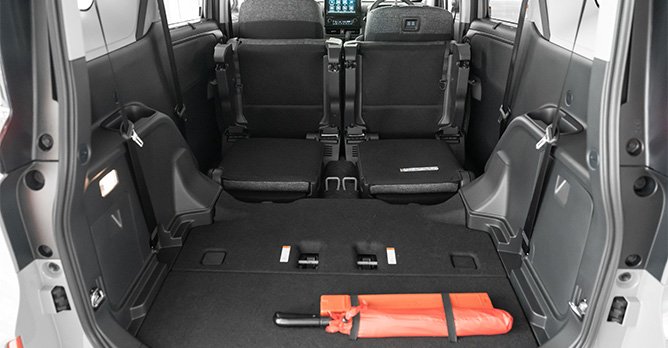
Thanks to its raised cabin height and flat roofline, passengers in the third row also get impressive headroom that will put most full-size SUVs to shame, and won't have to contort themselves to get into the back. Adults 1.75m and above will have to ask those in front to slide their seats forward, but they won't be sitting with their knees near their chest at the very least.
As for the car's other engineering feats, the mechanism that folds the third row of seats individually under the second row is still fascinating and very useful 19 years on. Watch the Sienta morph into a real van with everything tucked away.
Quiet sophistication
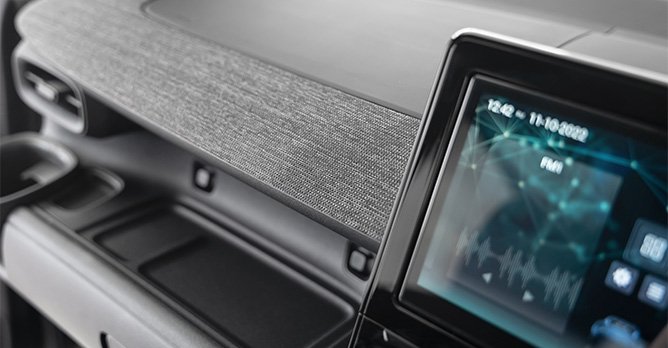
The expectation is for MPVs (especially compact, entry-level ones) to favour the passengers over the drivers, but one gets the sense that life behind the wheel of the Sienta Hybrid can actually be massively enjoyable.
For starters, the Sienta Hybrid gets one of the neatest dashes seen on a compact-class Toyota yet. Much credit is due to the atypical use of fabric surfaces here - what Toyota is describing as 'hi grade melange' - which is not just nice to touch, but also easy on the eyes with its TV-static look.
It's also a clever trick that disguises the lack of soft touch materials - but then again, this isn't supposed to be a premium car. For your comfort, and for better heat expulsion in our sunny weather, you'll be glad to note this fabric also covers all of the car's seats.
Up front, full-digitalisation has landed in the form of a vibrant 9.0-inch touchscreen for infotainment - featuring wireless Apple CarPlay/Android Auto, and surprisingly, one of the sharpest reverse cameras seen in a while - and a 7.0-inch driver's display. Both are foolproof, and complemented sensibly by buttons.
Performance-wise, a combined output of 114bhp and max torque of 140Nm from the motor generator may sound awfully similar to what its non-hybrid predecessor offered, but these on-paper fail to reflect the car's more pleasing power delivery.
As you get up to speed, the transition between the car's electric motor and its brand new 1.5-litre Dynamic Force engine is largely unobtrusive.
This Sienta hasn't suddenly become a hot-MPV overnight, so you'll still find other cars zipping past you, but remaining relaxed and unperturbed is almost instinctive, since the drone from the CVT is less coarse. It's also more of a melodious thrum now thanks to the car's three-cylinder unit.
The best of modern-day Toyota
On that note, the Sienta Hybrid reaps the full benefits of being built on Toyota's TNGA-B platform for the first time. The MPV feels more composed on the road than it's ever been, its softly-sprung suspension shrugging off imperfect surfaces with quiet ease. Cabin insulation - perhaps the largest chink in the previous model's armour - has also been greatly enhanced.
Underpinning all these qualities still is the car's very manageable size. The tall windscreen, reasonably-thin A-pillars and low beltline give the driver great all-round visibility, and steering is light and easy. Incredibly, its turning radius has been shrunk to five metres flat (from 5.2m).
As part of the car's Toyota Safety Sense pack, Lane Keeping Assist and Adaptive Cruise Control - both very well-executed and intuitive to use - are also offered for the first time. The sum of all these parts is a highly relaxing drive. This is the sort of vehicle that can make people who fear driving actually not mind - or even enjoy - being on the road.
Finally, getting close to the official figure of 25km/L is genuinely - and amazingly - within reach if your routes are highway-heavy; we managed 23.1km/L with a 50:50 mix of semi-cautious driving (which we were constantly reminded of via the Eco Score tab on the digital driver's display). If not mistreated on the road, the remarkable strength of the battery will allow the car to waft through your HDB carpark and up four floors of ramps entirely in EV mode.
A sensible, not so square A-to-B vehicle
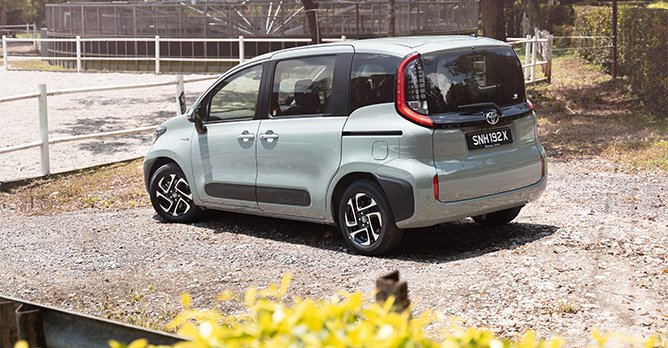
Rear aircon vents would have been nice despite the car's small size, and my dad was disappointed to find he didn't have an armrest of his own to enjoy when riding shotgun. One could surely also criticise some of the design choices as overdone (will those black bits of plastic cladding truly help you in a battle against an old narrow carpark?).
But bear in mind that this car represents a Singaporean driver's entry point to seven seats.
You'll eventually come round to the unassailable truth that today's Sienta in hybrid form is more appealing than it's ever been - if not for its cutesy personality and bulletproof reliability, then certainly for its continued sensibility and newfound sophistication. Point A-to-B vehicles don't have to be as impressive as this. Our roads will surely be filled with these little boxes-on-wheels at some point, but who could deny a garden of them?
Shopping for seven seats on a budget? This arch-rival of the Sienta was reintroduced to Singapore recently too!
And be sure to check out what we had to say about these seven-seaters in the $150,000 to $170,000 price range!
The facelifted Peugeot 5008 will take your entire family from point to point in utmost comfort and style
An economical seven-seater lies beneath the muscular SUV-suit of the facelifted Mitsubishi Outlander
The BYD M3e proves that full-electrification doesn't have to cost an arm and leg
See more of the cabin of this Toyota Sienta Hybrid here!
What We Like
Cutesy, cheerful demeanour
Use of fabric-like surfaces within the interior
Significantly improved refinement over its predecessor
Ferrying capabilities remain nearly unmatched in something of its size
What We Dislike
Styling cues might not hold universal appeal
No aircon vents for rear passengers
Let's face it: A world without point A-to-B vehicles would look very different, and not necessarily for the better too. We admire the vibrancy and beauty of flowers in the garden, but it is the mass of green all around, after all, that helps to complete the picture. Not every car can stir your soul or ride a TikTok-trend.
As far as A-to-B nameplates go, are there any today as (ever)green as the Toyota Sienta?
The bug-eyed, first-gen car flew under the radar as a parallel import, but the winds of favour blew all at once during the descent of the more daringly-designed second-gen model. As the concept of a private-hire vehicle (and adoption by Borneo Motors) came to life, so too did the MPV suddenly flood our roads.
The invariable consequence of such ubiquity is that most people are likely to have their own pre-conceived notions of the car. Think Sienta, and you think efficient and practical... and also a little unpolished and rough. While this new car certainly holds on to those former qualities, it also pulls out a few surprises to arrive at a significantly-improved final product.
The original Japanese import
It was clear that Toyota had been trying something more radical by drawing inspiration from, uh, a trekking shoe when the second-generation swung around.
While ditching the rising beltline and black outlines framing the preceding model's face and rear, the fresh application of a 'Shikakumaru' circle and square philosophy has returned today's third-gen (and Japan-built) Sienta Hybrid to its rounded, boxy shape.
Oval-shaped eyes stare curiously at you up front, while vertical taillights have found their way back into the D-pillars. Brought together on shuriken-resembling 15-inch alloys, the Sienta Hybrid manages to pull off the sort of - dare we say - adorable visual personality associated only with superminis.
Of course, this is still a compact vehicle by modern-day standards.
Even after gaining 25mm in length, the car is just over 4.2 metres long, and close to 1.7 metres tall and wide. It does this, too, by remaining true to its tried and tested space-utilising formula with welcome updates - which is to say, it continues to be unbelievably adept at fitting seven into a bite-sized package.
Circling back: Generational wealth
Toyota says maximising second row passenger comfort was a priority this time round, and the design reversion to a low horizontal belt line substantiates this.
Although there is actually slightly more space between the front and second rows, the sense of it, just as importantly, has been enhanced by the extra light coming in through those large windows. For defence against the heat, the Sienta gets UV and infrared ray repellent applied to the windows and manually retractable shades on the Elegance trim (currently the only variant available).

Thanks to its raised cabin height and flat roofline, passengers in the third row also get impressive headroom that will put most full-size SUVs to shame, and won't have to contort themselves to get into the back. Adults 1.75m and above will have to ask those in front to slide their seats forward, but they won't be sitting with their knees near their chest at the very least.
As for the car's other engineering feats, the mechanism that folds the third row of seats individually under the second row is still fascinating and very useful 19 years on. Watch the Sienta morph into a real van with everything tucked away.
Quiet sophistication

The expectation is for MPVs (especially compact, entry-level ones) to favour the passengers over the drivers, but one gets the sense that life behind the wheel of the Sienta Hybrid can actually be massively enjoyable.
For starters, the Sienta Hybrid gets one of the neatest dashes seen on a compact-class Toyota yet. Much credit is due to the atypical use of fabric surfaces here - what Toyota is describing as 'hi grade melange' - which is not just nice to touch, but also easy on the eyes with its TV-static look.
It's also a clever trick that disguises the lack of soft touch materials - but then again, this isn't supposed to be a premium car. For your comfort, and for better heat expulsion in our sunny weather, you'll be glad to note this fabric also covers all of the car's seats.
Up front, full-digitalisation has landed in the form of a vibrant 9.0-inch touchscreen for infotainment - featuring wireless Apple CarPlay/Android Auto, and surprisingly, one of the sharpest reverse cameras seen in a while - and a 7.0-inch driver's display. Both are foolproof, and complemented sensibly by buttons.
Performance-wise, a combined output of 114bhp and max torque of 140Nm from the motor generator may sound awfully similar to what its non-hybrid predecessor offered, but these on-paper fail to reflect the car's more pleasing power delivery.
As you get up to speed, the transition between the car's electric motor and its brand new 1.5-litre Dynamic Force engine is largely unobtrusive.
This Sienta hasn't suddenly become a hot-MPV overnight, so you'll still find other cars zipping past you, but remaining relaxed and unperturbed is almost instinctive, since the drone from the CVT is less coarse. It's also more of a melodious thrum now thanks to the car's three-cylinder unit.
The best of modern-day Toyota
On that note, the Sienta Hybrid reaps the full benefits of being built on Toyota's TNGA-B platform for the first time. The MPV feels more composed on the road than it's ever been, its softly-sprung suspension shrugging off imperfect surfaces with quiet ease. Cabin insulation - perhaps the largest chink in the previous model's armour - has also been greatly enhanced.
Underpinning all these qualities still is the car's very manageable size. The tall windscreen, reasonably-thin A-pillars and low beltline give the driver great all-round visibility, and steering is light and easy. Incredibly, its turning radius has been shrunk to five metres flat (from 5.2m).
As part of the car's Toyota Safety Sense pack, Lane Keeping Assist and Adaptive Cruise Control - both very well-executed and intuitive to use - are also offered for the first time. The sum of all these parts is a highly relaxing drive. This is the sort of vehicle that can make people who fear driving actually not mind - or even enjoy - being on the road.
Finally, getting close to the official figure of 25km/L is genuinely - and amazingly - within reach if your routes are highway-heavy; we managed 23.1km/L with a 50:50 mix of semi-cautious driving (which we were constantly reminded of via the Eco Score tab on the digital driver's display). If not mistreated on the road, the remarkable strength of the battery will allow the car to waft through your HDB carpark and up four floors of ramps entirely in EV mode.
A sensible, not so square A-to-B vehicle

Rear aircon vents would have been nice despite the car's small size, and my dad was disappointed to find he didn't have an armrest of his own to enjoy when riding shotgun. One could surely also criticise some of the design choices as overdone (will those black bits of plastic cladding truly help you in a battle against an old narrow carpark?).
But bear in mind that this car represents a Singaporean driver's entry point to seven seats.
You'll eventually come round to the unassailable truth that today's Sienta in hybrid form is more appealing than it's ever been - if not for its cutesy personality and bulletproof reliability, then certainly for its continued sensibility and newfound sophistication. Point A-to-B vehicles don't have to be as impressive as this. Our roads will surely be filled with these little boxes-on-wheels at some point, but who could deny a garden of them?
Shopping for seven seats on a budget? This arch-rival of the Sienta was reintroduced to Singapore recently too!
And be sure to check out what we had to say about these seven-seaters in the $150,000 to $170,000 price range!
The facelifted Peugeot 5008 will take your entire family from point to point in utmost comfort and style
An economical seven-seater lies beneath the muscular SUV-suit of the facelifted Mitsubishi Outlander
The BYD M3e proves that full-electrification doesn't have to cost an arm and leg
See more of the cabin of this Toyota Sienta Hybrid here!
Car Information
Toyota Sienta Hybrid 1.5 Elegance (A)
$197,888
CAT A|Petrol-Electric|25km/L
Horsepower
85kW (114 bhp)
Torque
120 Nm
Acceleration
12.5sec (0-100km /hr)
Promotion
Celebrate 100 years of Borneo Motors with 100-month benefits on warranty, servicing, road tax & more!
Read moreThank You For Your Subscription.
